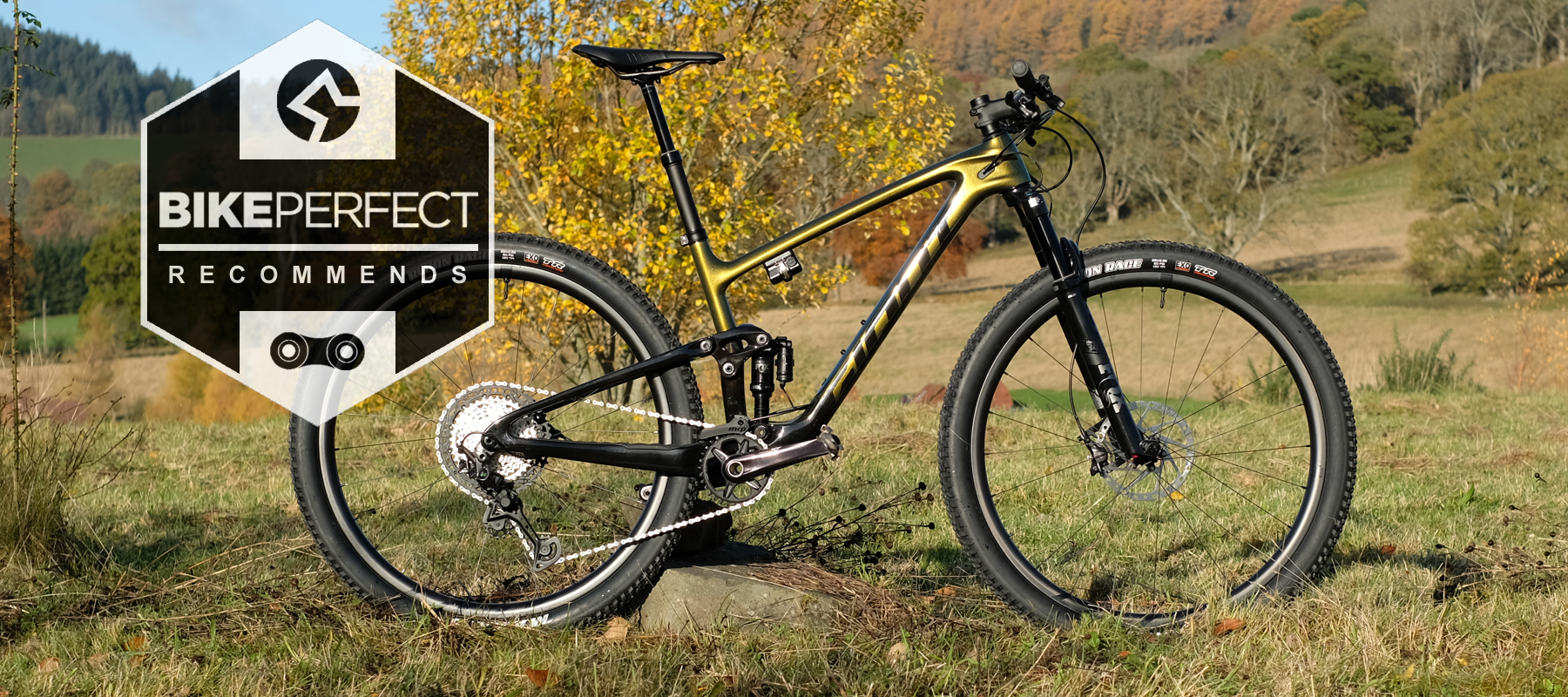Bike Perfect Verdict
Giant Anthem Advanced Pro 29 1 is as efficient on the ups as it is composed coming back down. Fox Live Valve suspension genuinely boosts performance but is not going to appeal to everyone.
Pros
- +
Calm and controlled geometry
- +
Well controlled suspension
- +
Very capable spec list
- +
Live Valve works effectively in the background
Cons
- -
Lower shock mount recess collects dirt
- -
Only one bottle cage
- -
No downtube protection
- -
No internal frame storage
- -
Snakepit of Live Valve cables
Why trust BikePerfect
Giant has released the new 2022 Anthem Advanced Pro and the cross-country platform has received a serious overhaul. It’s been four years since the Anthem last had an update and a lot has changed in the cross-country scene since the last bike was released. Now not only do the current crop of cross-country bikes make the outgoing Anthem look pretty dated, but even some of the more radical adventure gravel bikes are starting to get close to the old Anthem’s conservative geometry numbers. Giant’s latest Anthem brings it right back in line with some significant updates that will greatly boost the capability that is demanded by modern cross-country racing.
For information on Bike Perfect's testing procedures and how our scoring system works, see our how we test page.
No longer using the Maestro suspension design, which has been a stalwart of Giant’s best full-suspension mountain bikes, it is now using a new system called Flexpoint Pro. Since the Anthem’s original launch in 2005, the cross-country race platform has gone through a number of changes to suspension layout but this will be the first time that the actual design has been changed. Alongside the simplified and lightened rear end, Giant has also completely remodeled the geometry, lengthening and slackening the bike’s stance to bring the Anthem up to date.
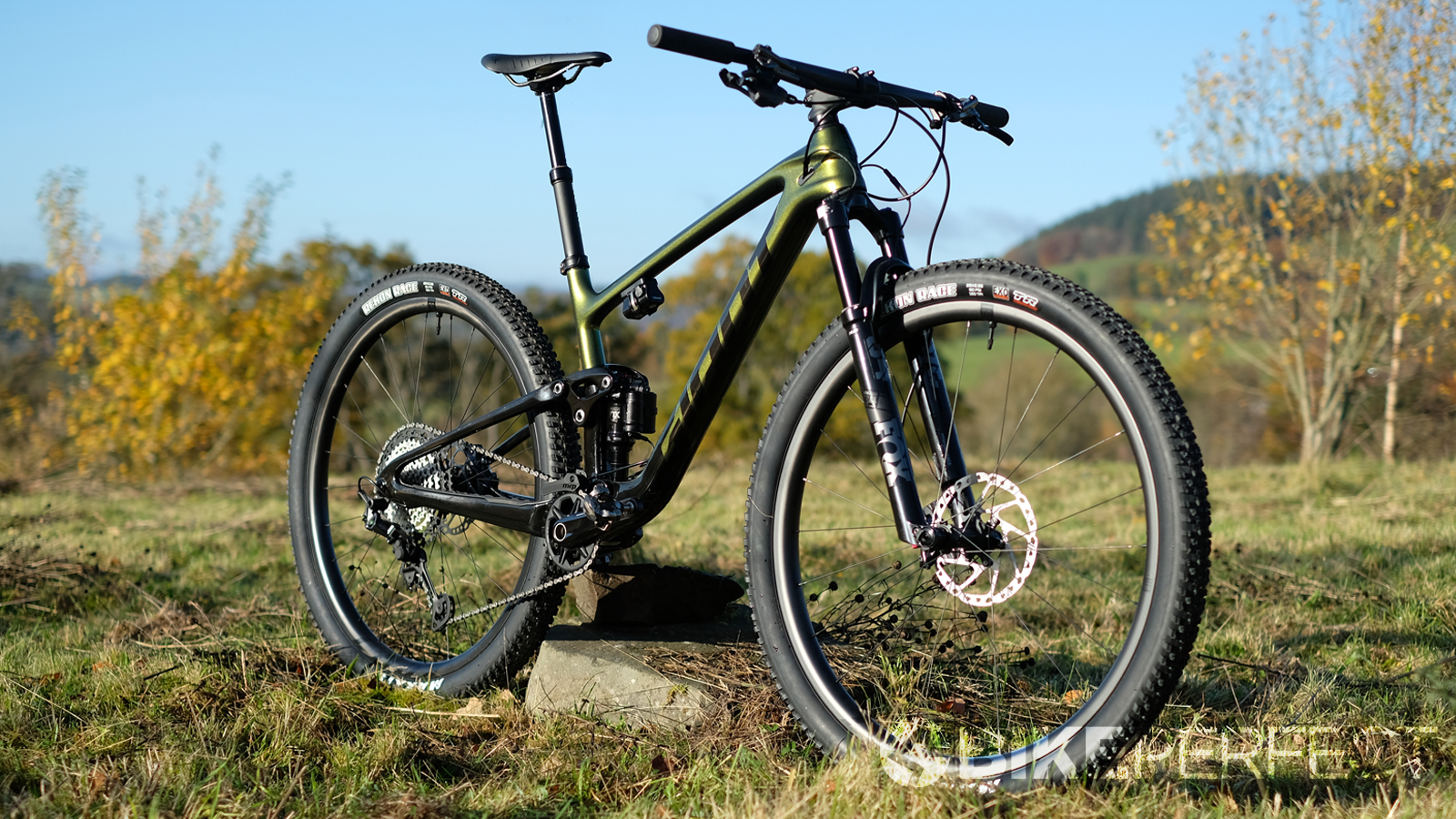
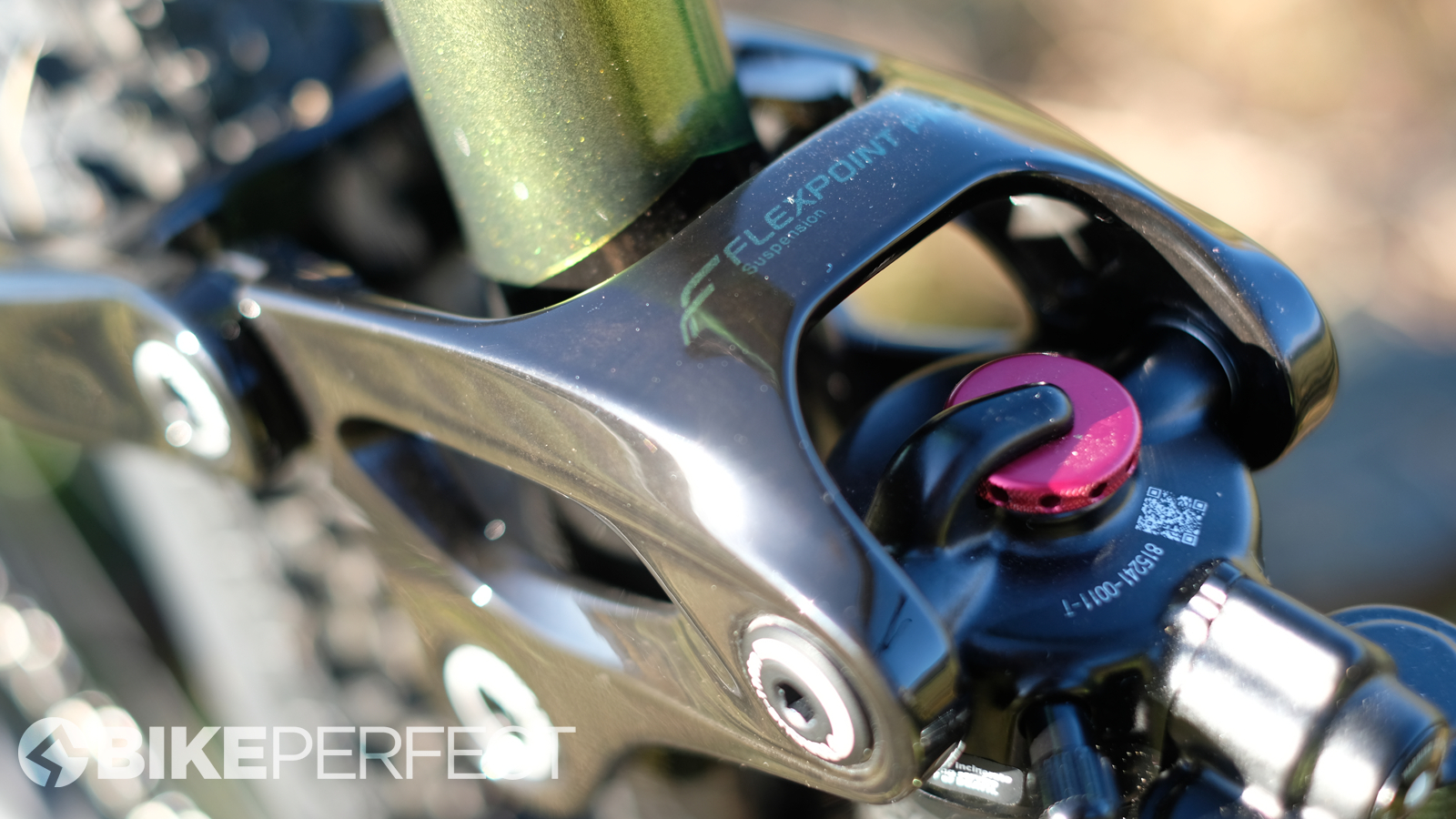
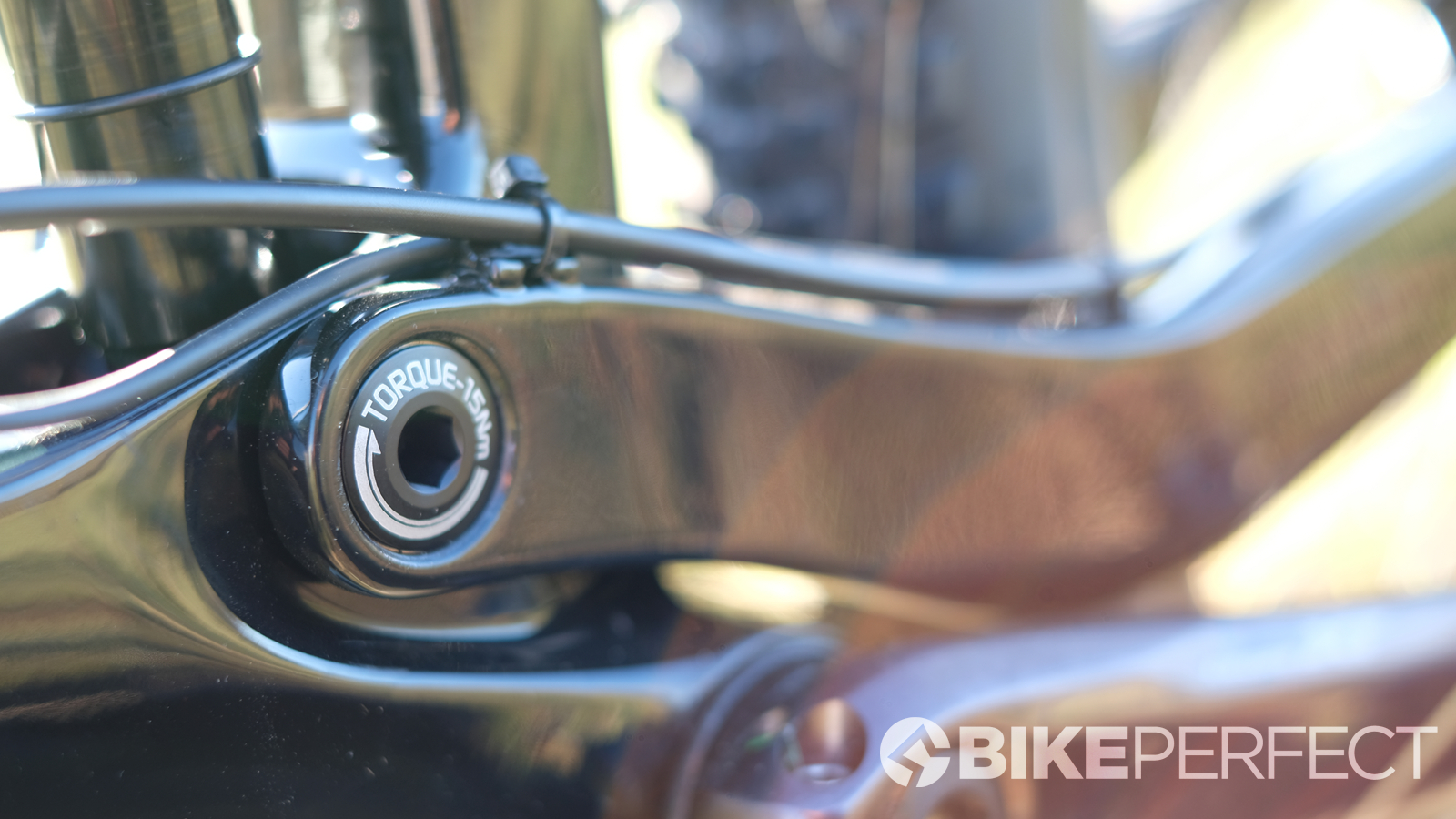
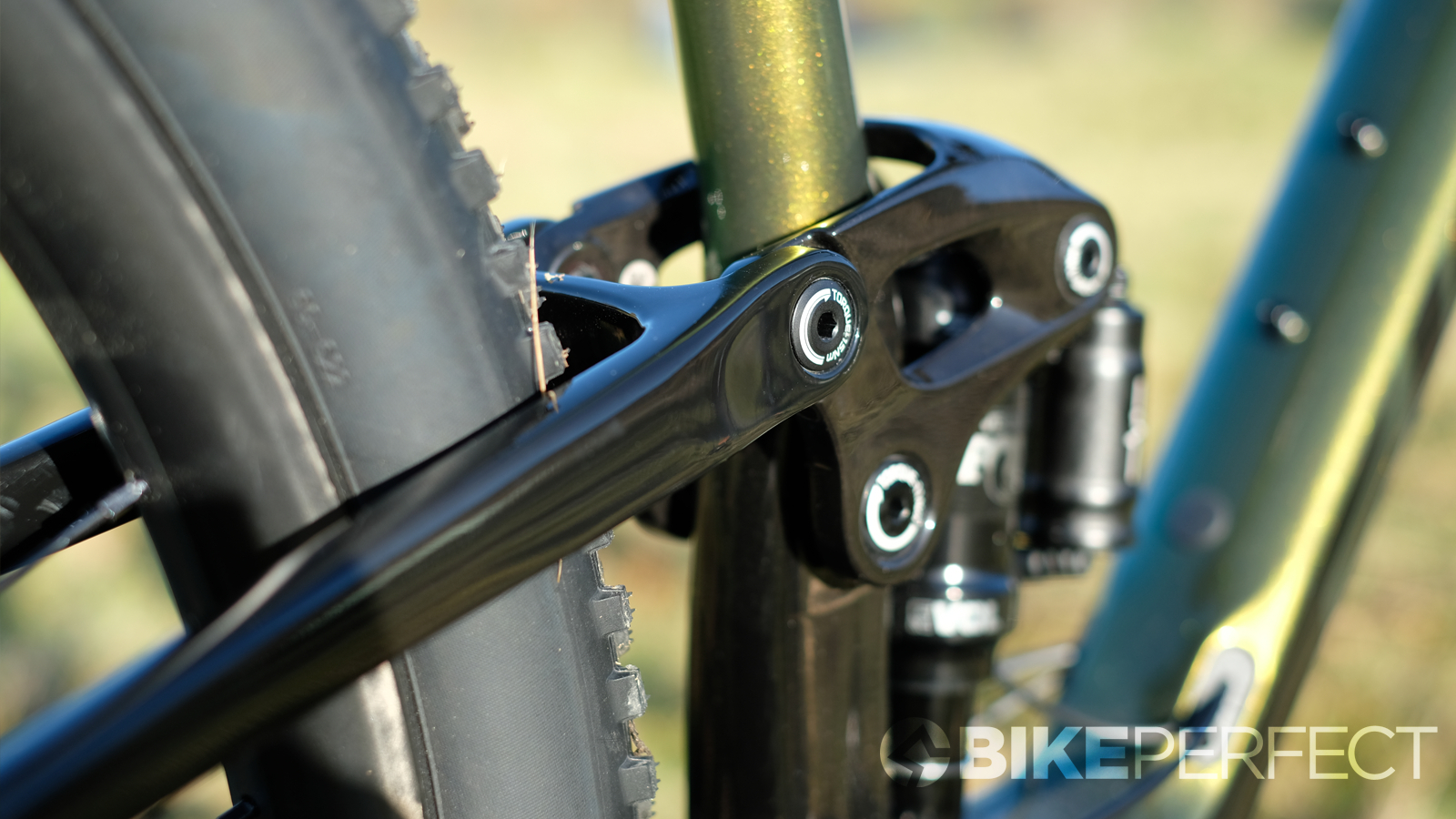
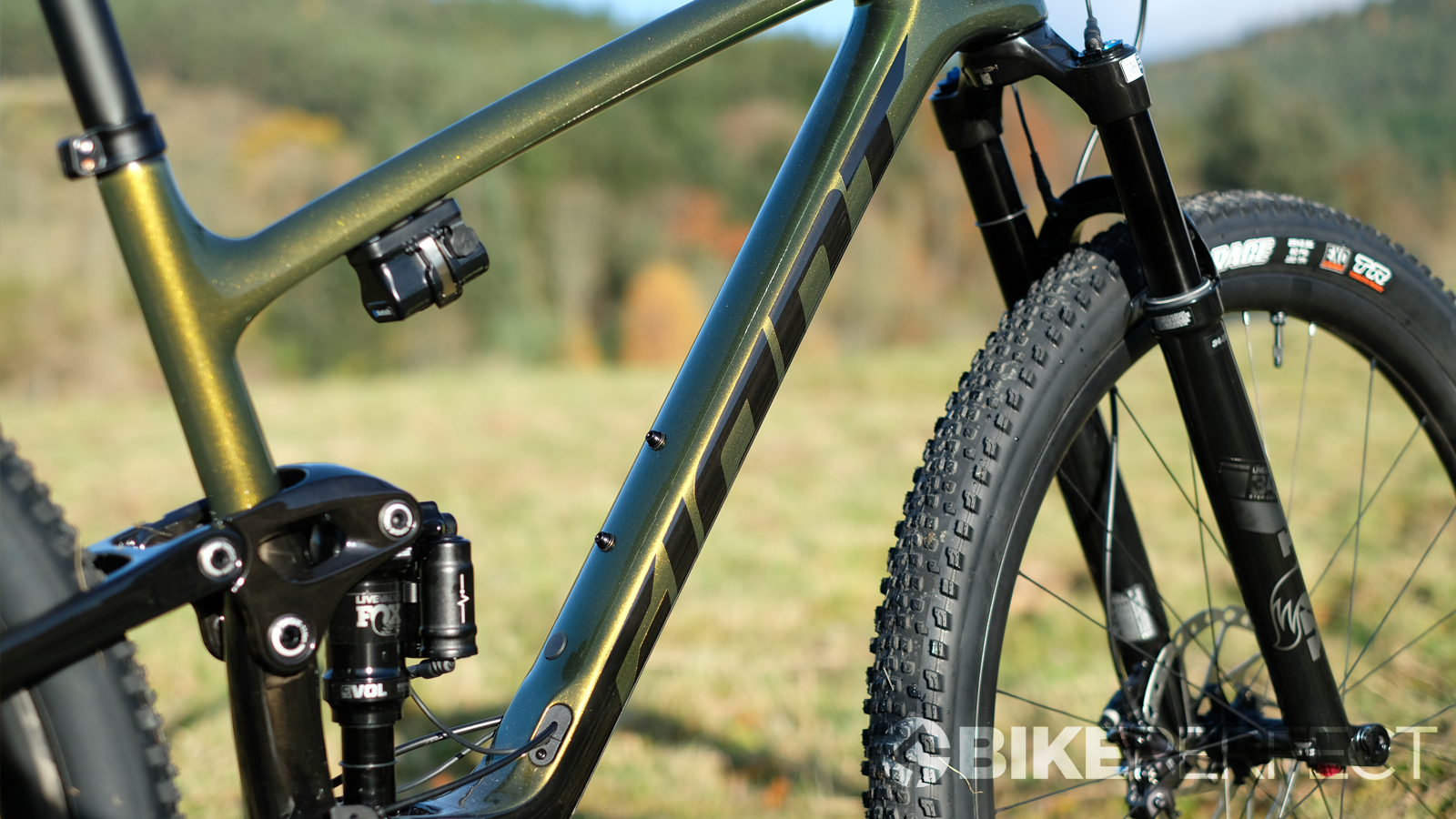

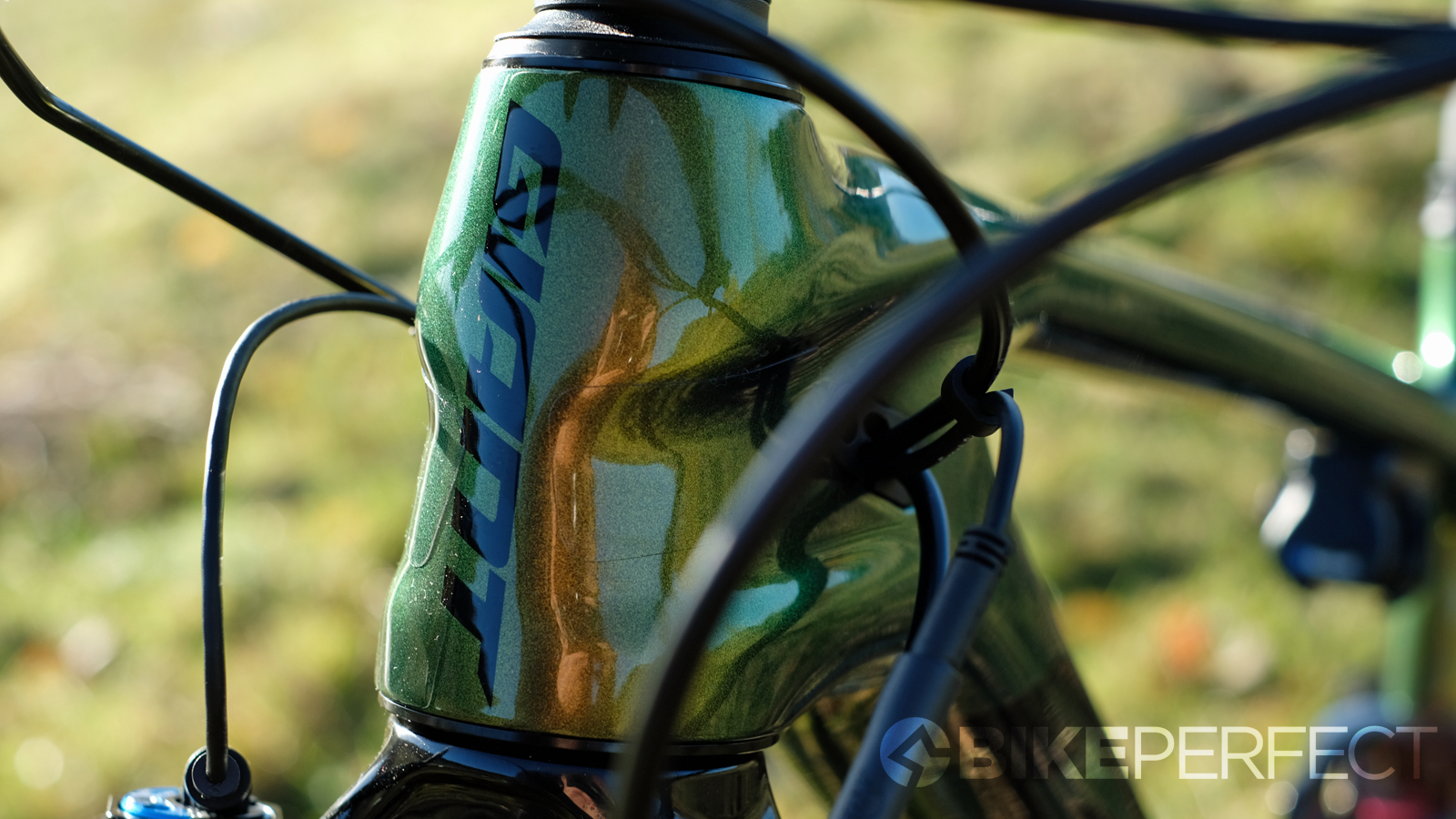
Design and aesthetics
Giant has used its next-generation Advanced composite carbon fiber for the Anthem’s main triangle and rear end. Giant says that it has managed to increase torsional stiffness to improve handling and there are molded brows that extend around the headtube and merge into the low slung and gently curving top tube. The downtube has a broad flattened shape and curves horizontally at the bottom to meet the bottom bracket, lower pivot, and bottom shock mount. Giant claims that the new Anthem is 20 percent stiffer in the bottom bracket area to improve power transfer when sprinting and climbing. One oversight is the lower shock mount is recessed into the downtube which forms a bowl and collects dirt.
At first glance, it doesn't look like a whole lot has changed regarding the suspension. However, like many other recently released cross-country bikes, Giant has opted for rear flex points rather than using pivots throughout. Gone is Giant’s faithful virtual pivoted Maestro system and in its place is a new FlexPoint Pro suspension design. This means the Anthem uses a linkage-driven single-pivot system to deliver the 100mm of rear suspension travel, 10mm more than the previous model. While that means fewer pivots to service, the most significant gain from removing the lower linkage is that the rear end is now 250g lighter than the old Anthem.
The 67.5-degree head tube angle might not match the de rigueur numbers of some more radical downcountry-esque bikes I have seen recently, but it’s still plenty slack enough for cross-country riding and is on a par with the roster of bikes that can be found lining up at the start of races and, more importantly, crossing the finish line at the front of the pack. Stretching the reach to 450mm on my size medium and boosting suspension travel further enhances the Anthem’s on-paper poise for tackling the steeper gnarlier terrain that is now expected of cross-country mountain bikes. To help put riders in a better climbing position, the seat tube angle is now 75.5-degrees, an increase of two degrees over the older version, and by removing the lower linkage, FlexPoint Pro has allowed Giant to shorten the chainstays by 3mm.
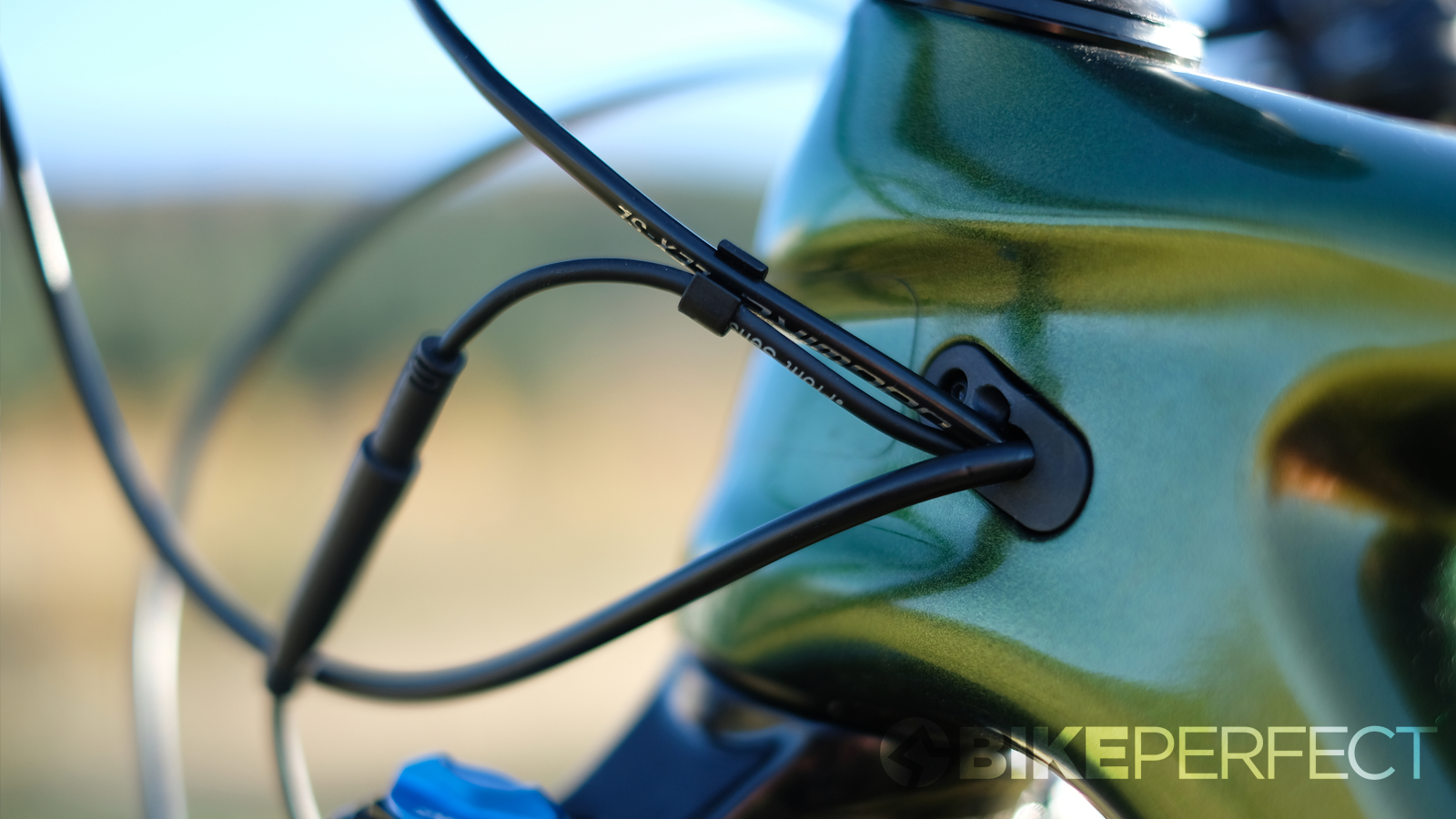
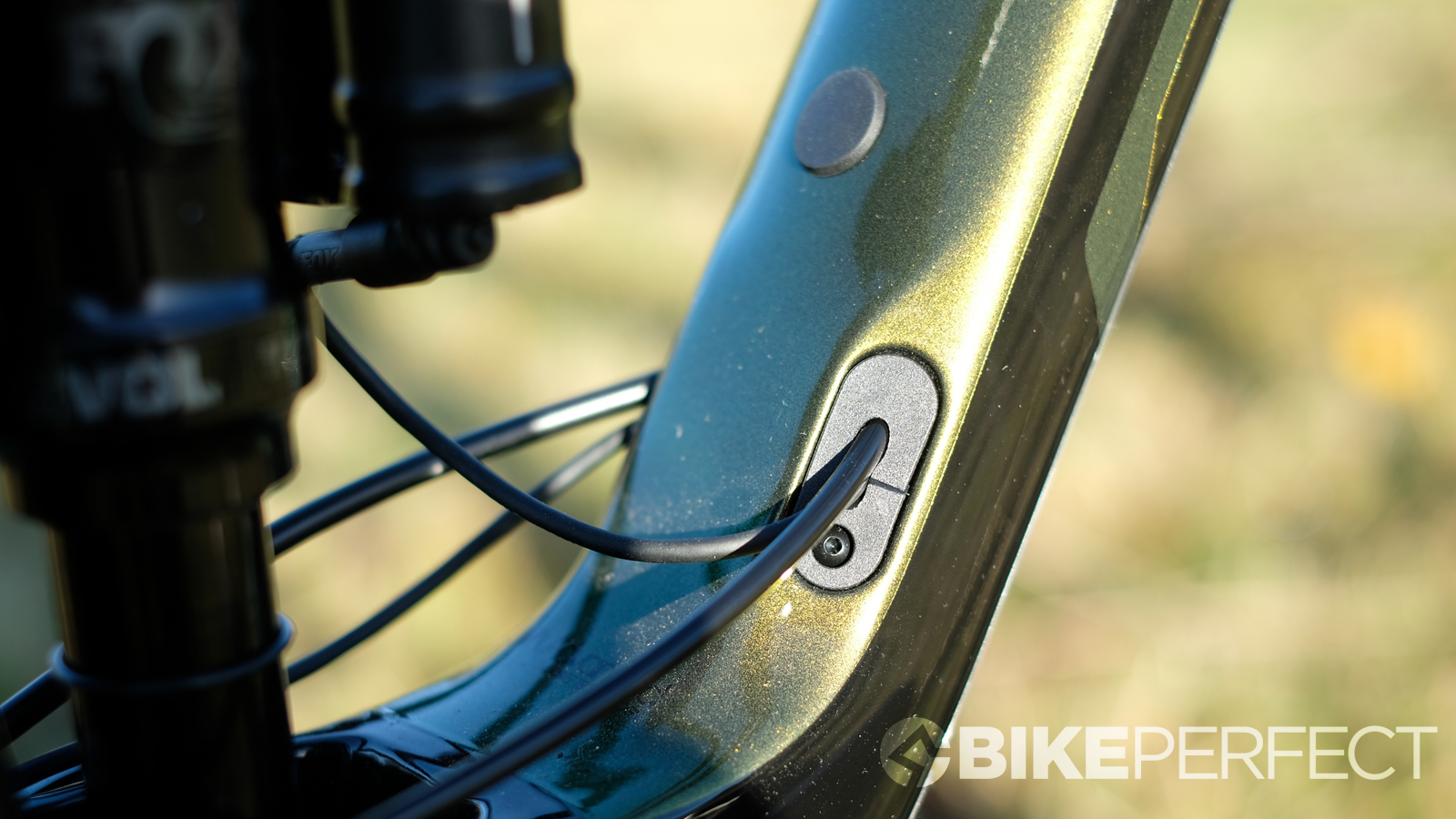
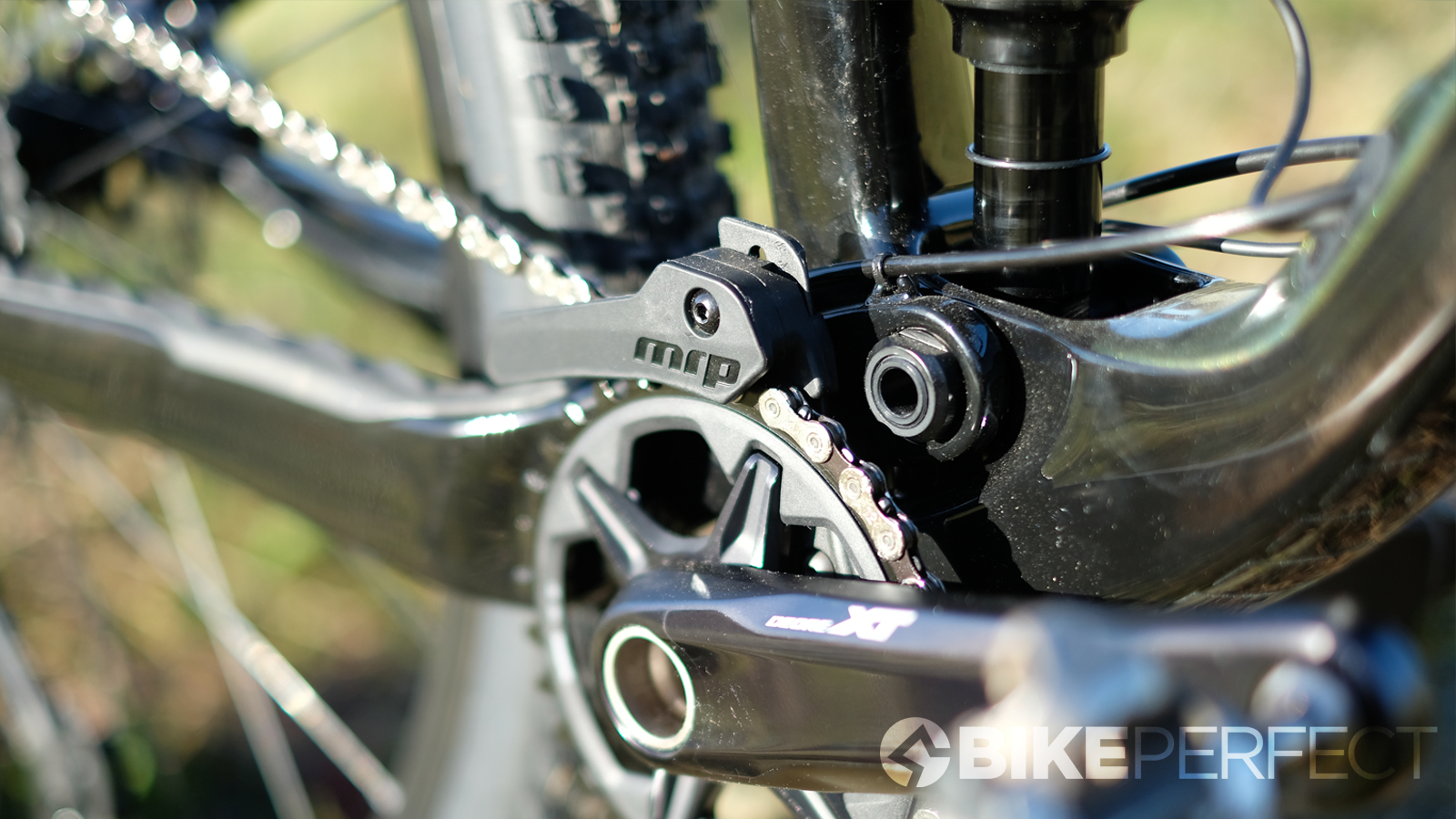
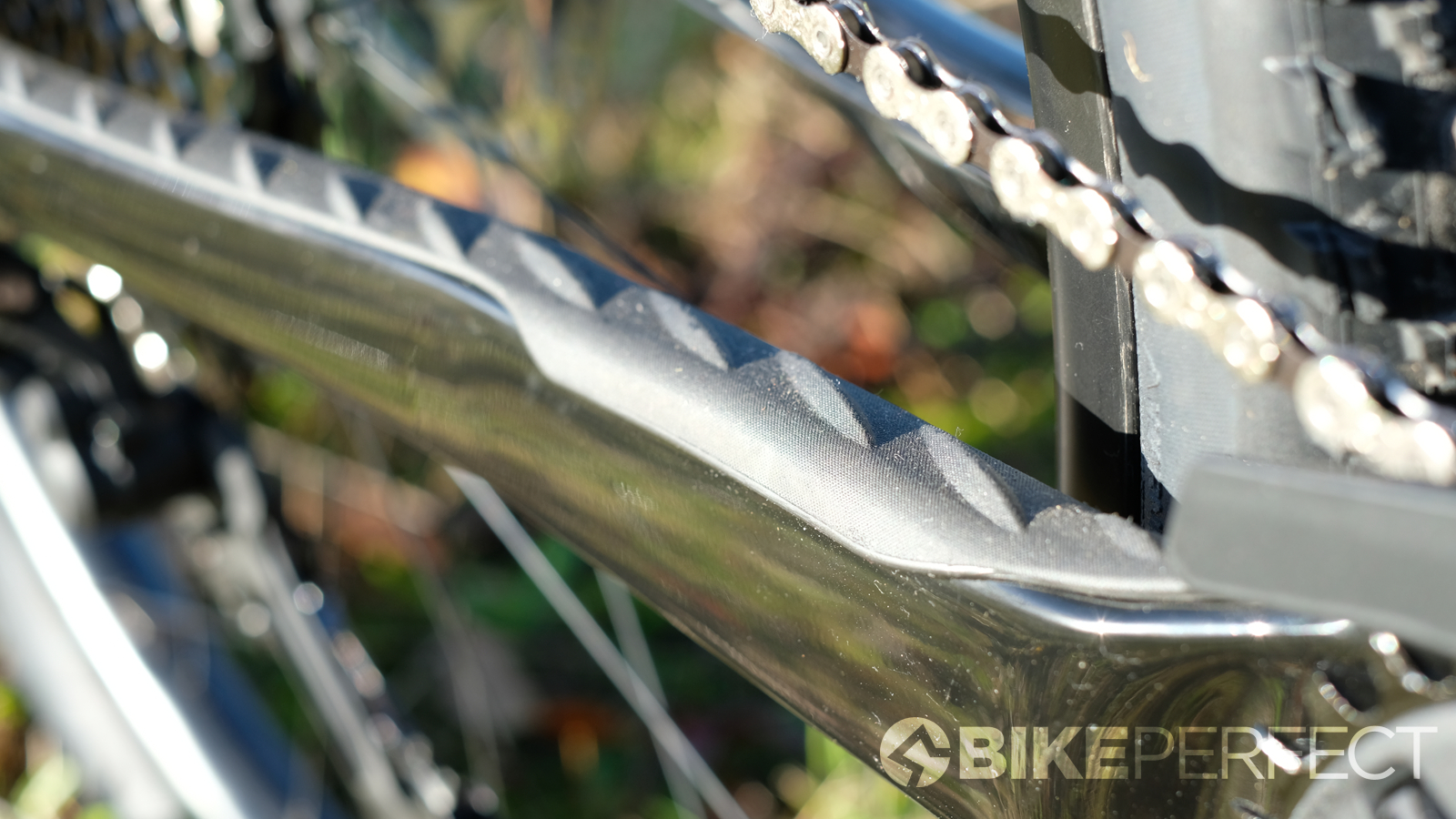
There isn’t a geometry altering flip-chip though, which is surprising considering that Giant’s other performance suspension bikes have one and even the recently released Revolt gravel bike gets one to allow riders to tailor the geometry to riding conditions.
Detailing is decent with plenty of rubber chain protection on the chainstay and inside of the seat stay. The internal cable routing is relatively neat, feeding through bolted cable guides located just behind the headtube. These exit at the bottom of the downtube to either run internally through the chainstay to the rear derailleur or externally along the inside of the non-driveside chainstay. Unfortunately due to the layout of the frame, there is only space for a single bottle cage.

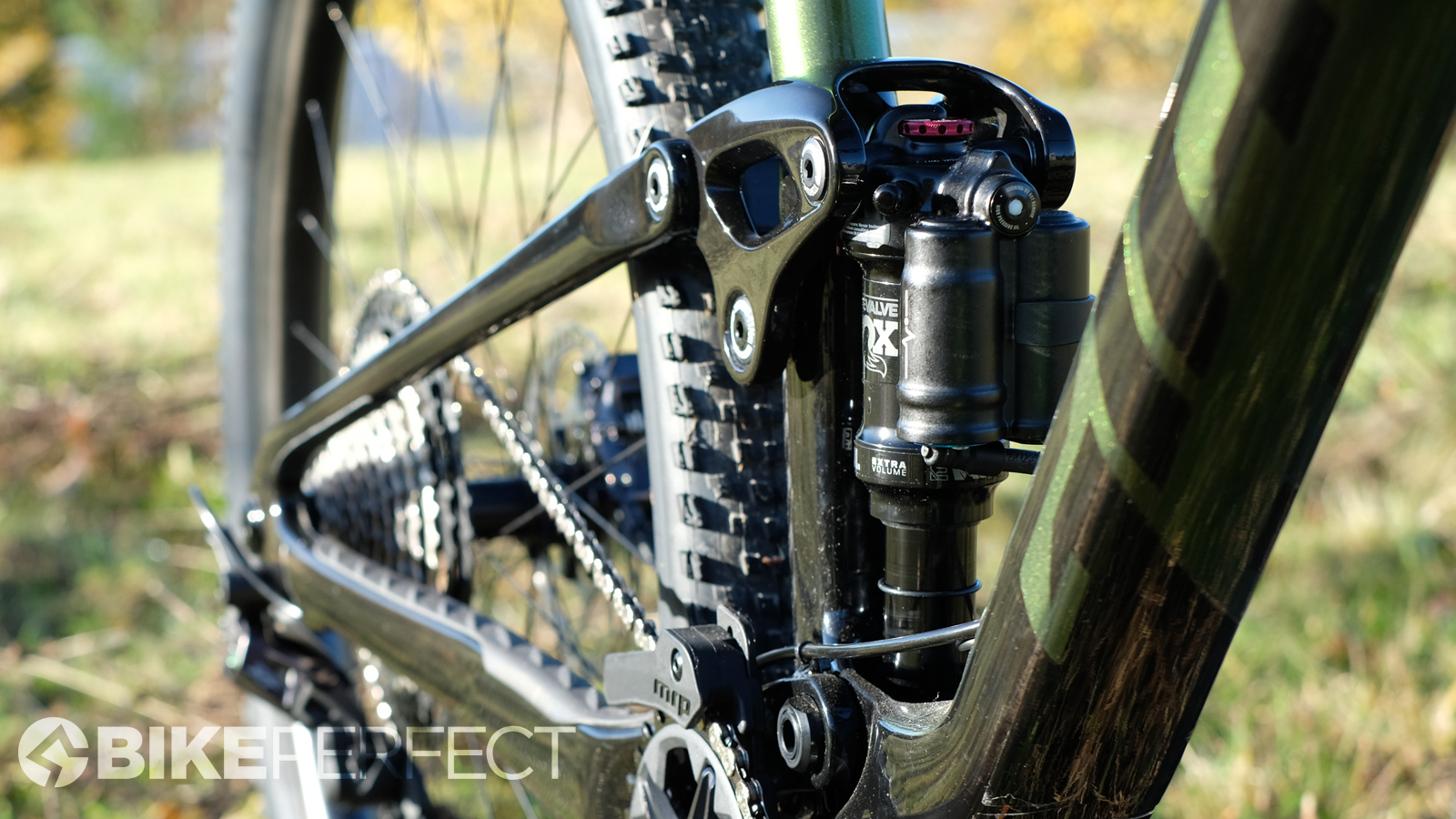
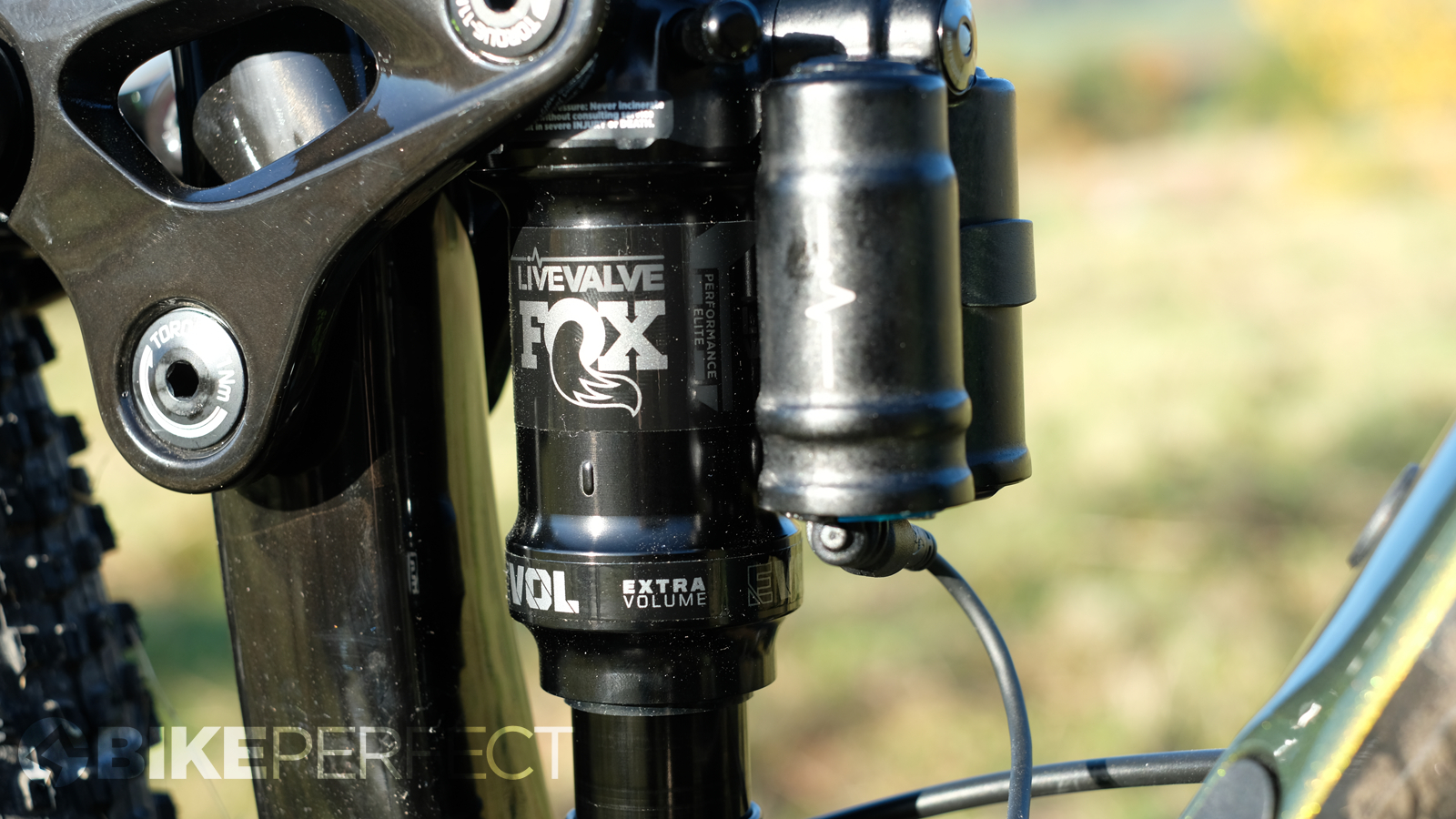
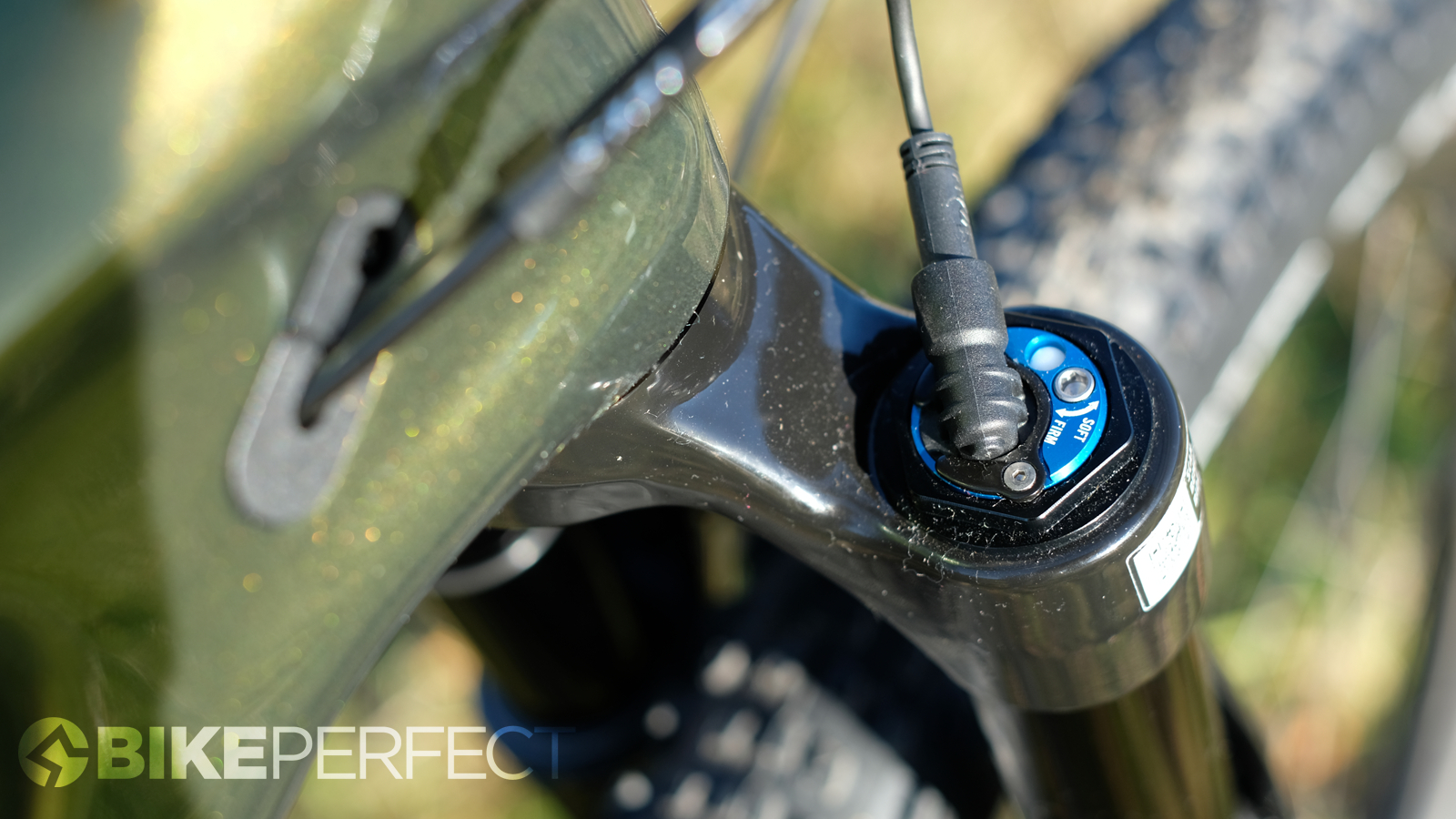
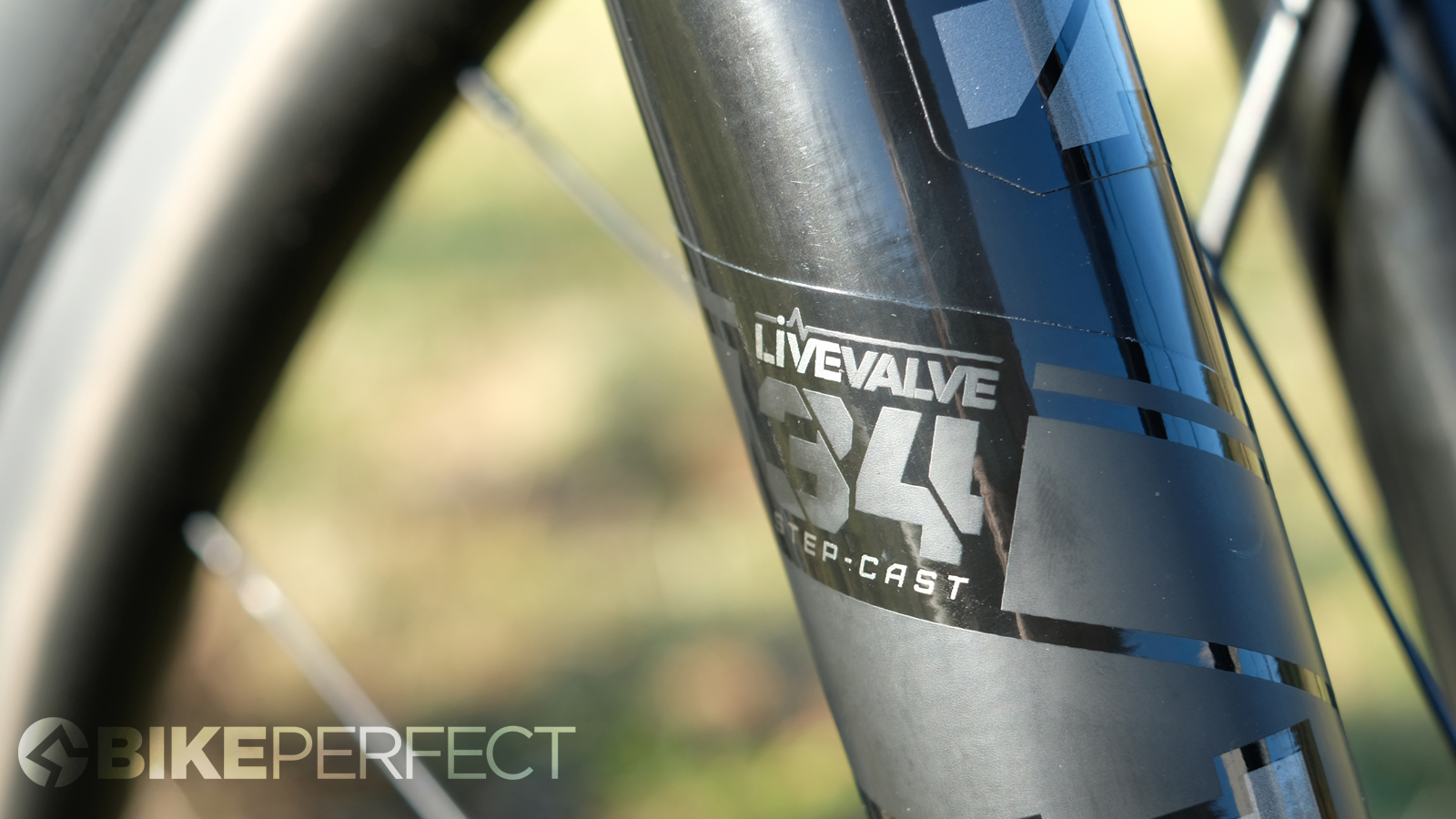
Components and build
For 2022 Giant has doubled down on its support of Fox’s Live Valve suspension system, fitting the new Live Valve 1.5 to its 2022 bikes. For those unaware of what Fox’s Live Wire is, it is an electronic system that automatically controls the suspension as you ride. The system uses sensors to take measurements thousands of times per second and feed that data to a controller (the unit under the downtube) which automatically adjusts the fork and shock independently as the terrain changes. While it may add a significant level of engineering complexity, the idea is that the system simplifies the riding experience. Simply put, the system remains closed off until it senses that the suspension is needed to absorb an impact. The Live Valve reaction time is claimed to be three milliseconds and should feel seamless while riding.
Giant has specced Fox Live Valve on the Anthem previously, as well as other full-suspension bikes in its ranges, for 2022 Live Valve will be fitted to the Anthem Advanced Pro 29 1 we have here. Although Giant features a Live Valve build on all its Advanced Pro level bikes, there are actually very few bikes on the market that are equipped with the elusive electronic suspension system from Fox. If you want a Live Valve cross-country bike, your choice is this Anthem or Pivot’s Mach 4 SL – that's it.
The Giant Anthem Advanced Pro 29 1’s suspension sensor wizardry and mysterious magic box are undoubtedly going to be the biggest talking point of the spec, not just because of the promised performance but also because of how rarely it’s seen specced. Said Live Valve system plugs into a 110mm Fox 34 Stepcast Performance Elite fork and a Performance Elite rear shock, both of which have been custom-tuned for Giant. Suspension settings can be controlled using the mode button on the battery unit under the downtube or via the smartphone app which connects via Bluetooth.
The drivetrain is very almost a Shimano XT full house including a 10-51t 12-speed cassette and 32t chainring, the only XT exclusion being a KMC chain. The Shimano XT brakes are paired with 180mm front and 160mm rear disk rotors.
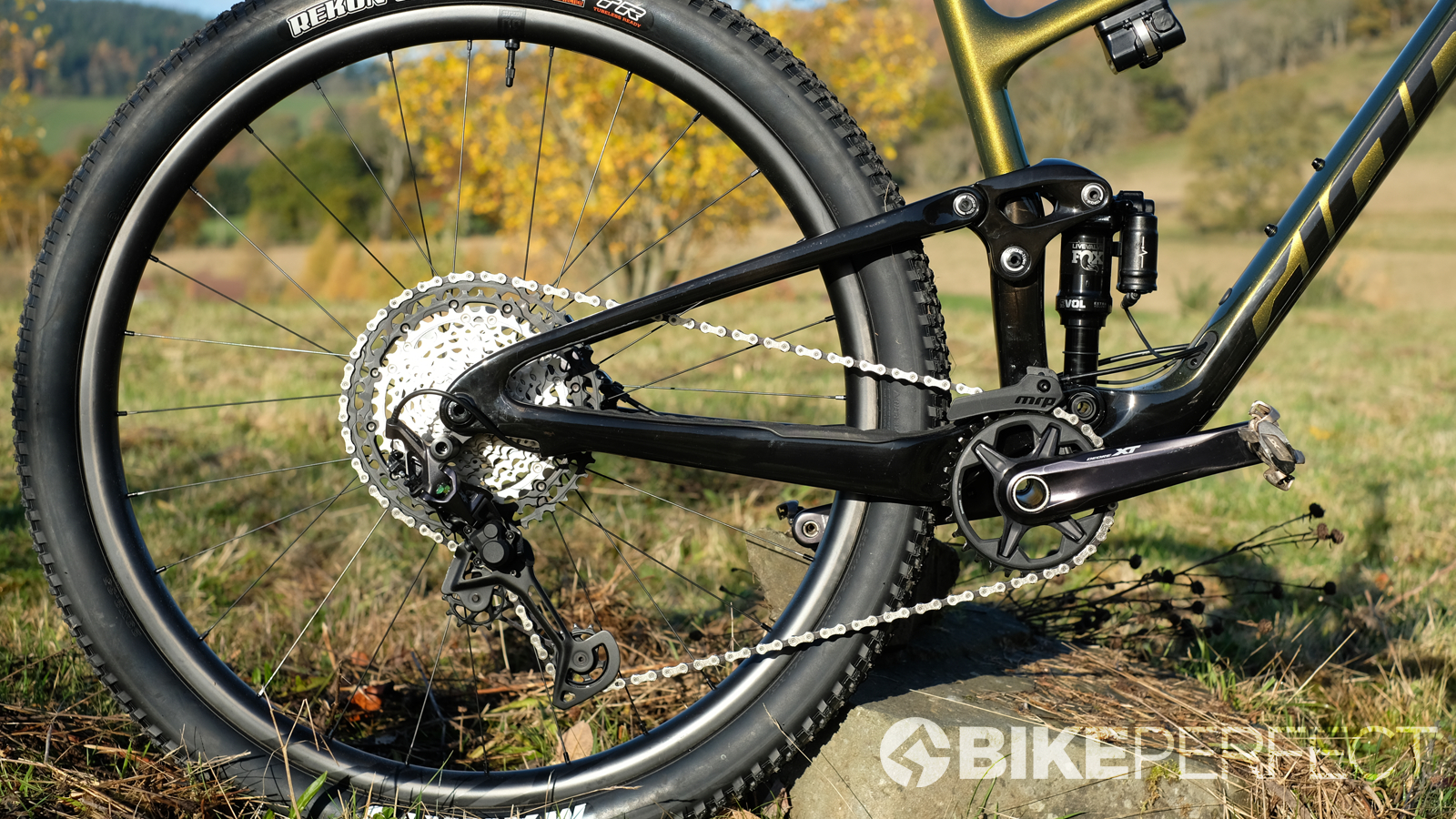
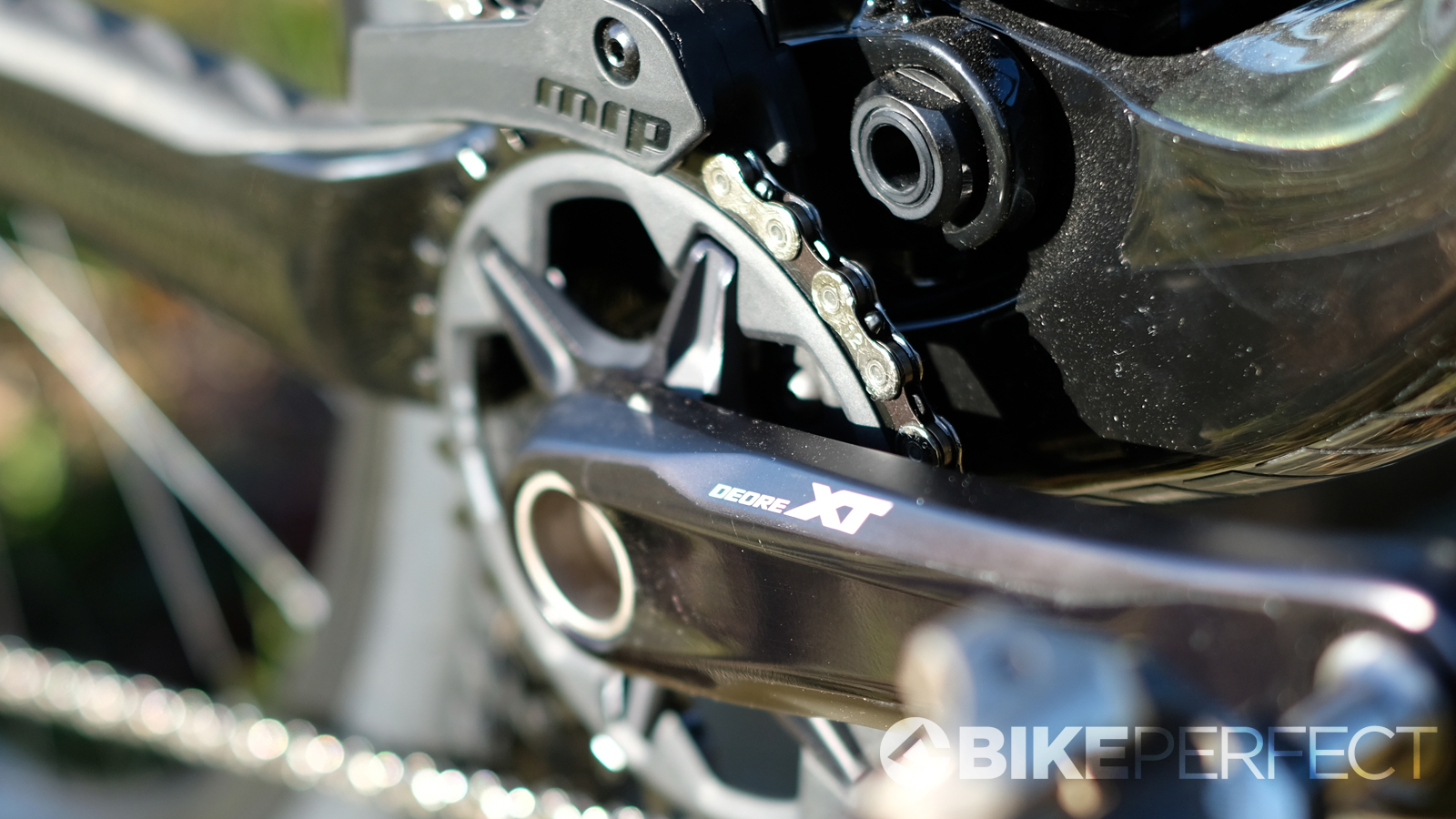
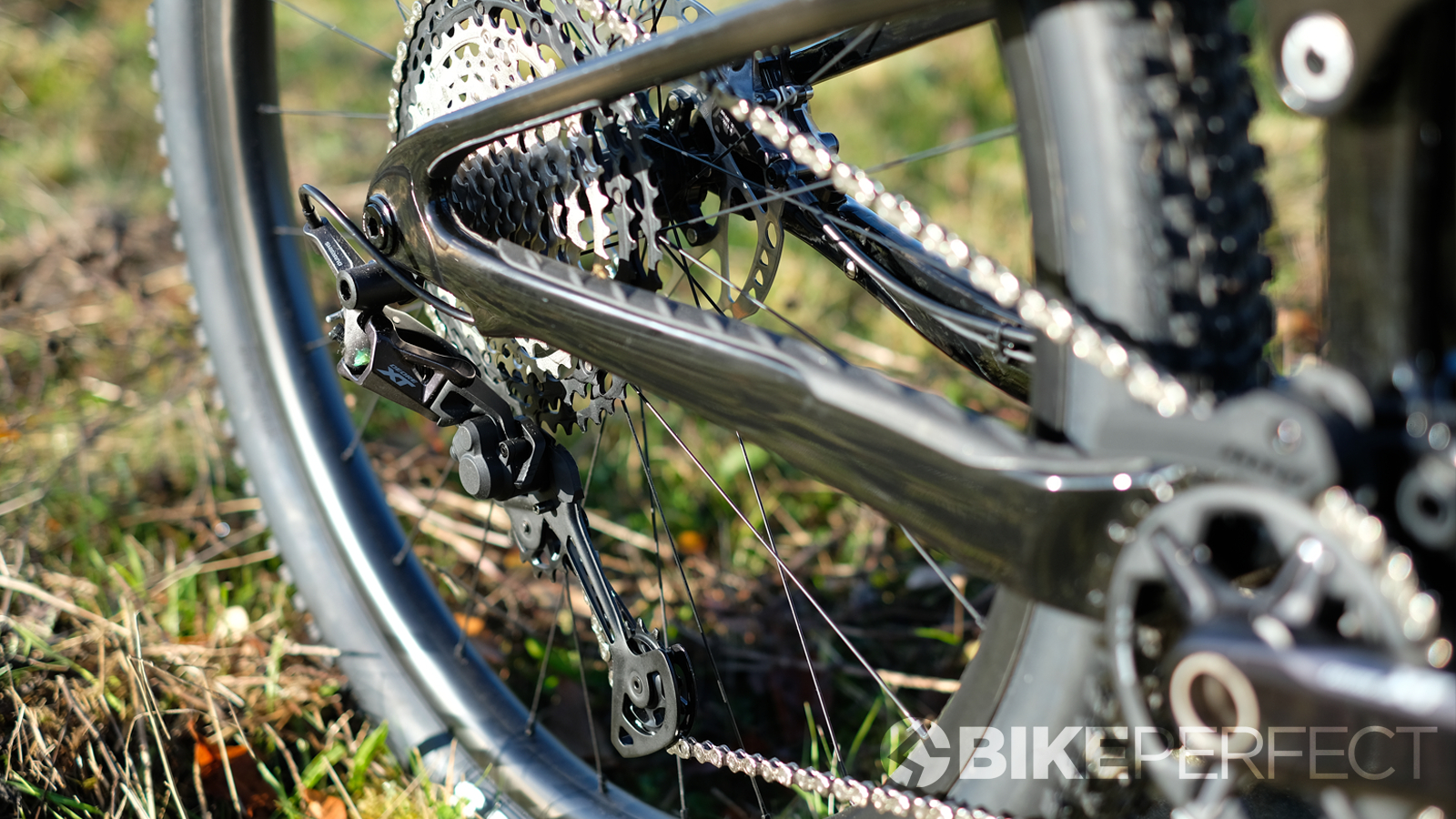
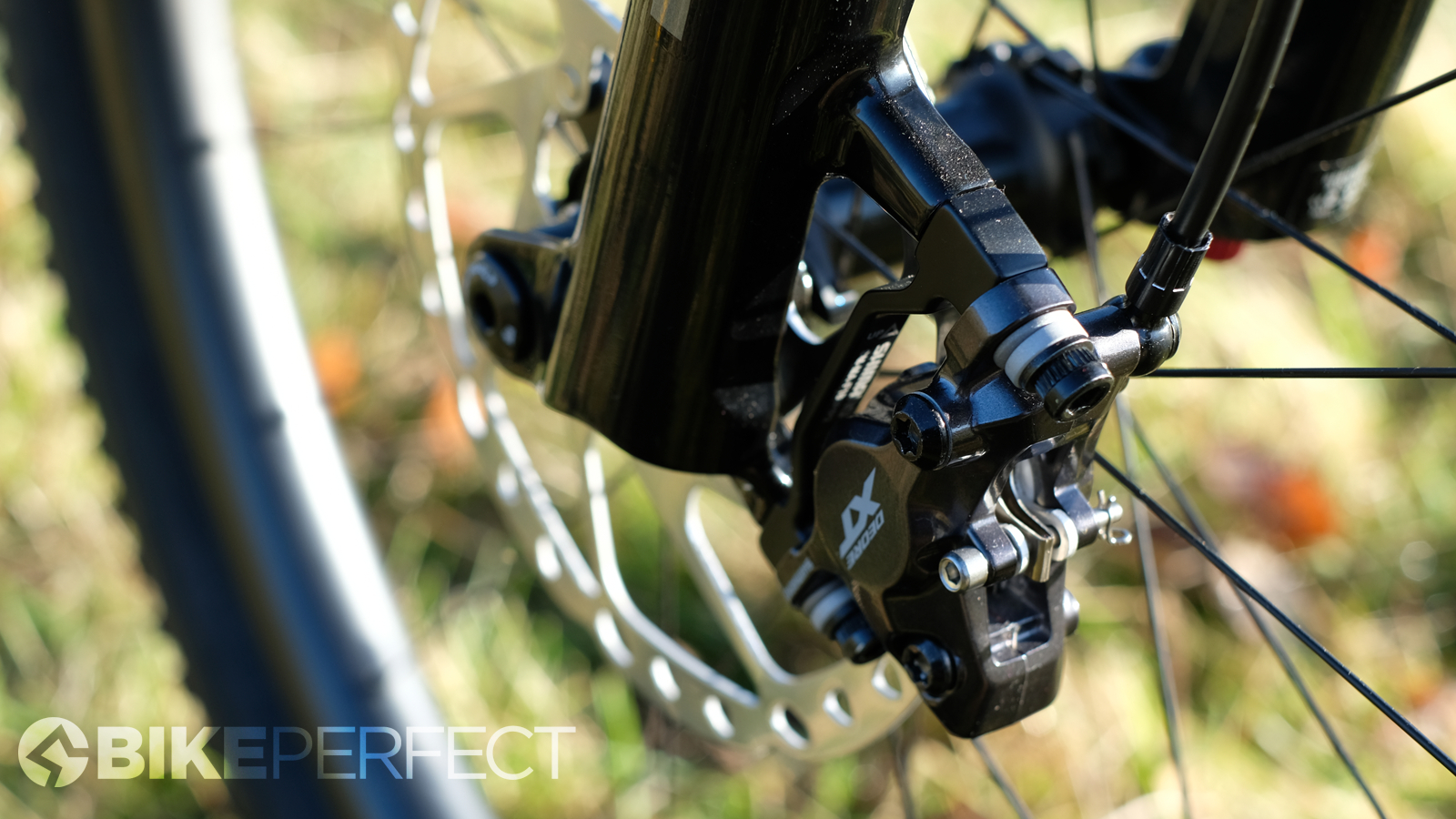

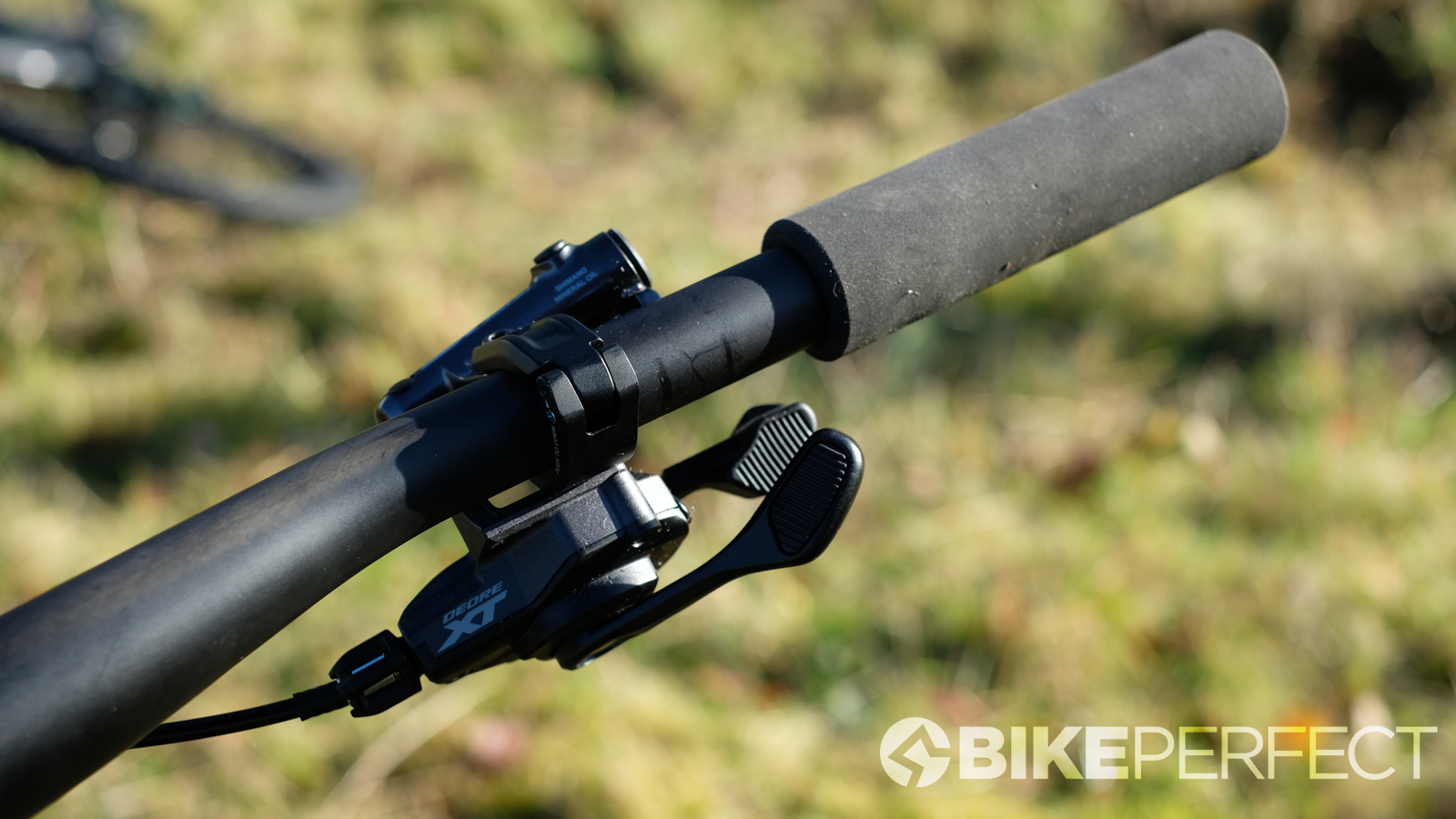
The finishing kit comes from Giant and features a 760mm Contact SLR XC carbon handlebar and Contact SL 70mm stem with a 35mm clamp diameter. The Giant Contact Switch dropper post on my medium comes with 125mm of travel (size large goes to 150mm) and is topped with a Fizik Antares R5 saddle.
The wheels are Giant's own XCR 1 wheelset, set up tubeless from the factory with Maxxis Rekon tires in a 2.35. The Giant branded hubs used are fast to engage and are built to 30mm wide carbon rims using 24 front/28 rear spokes.
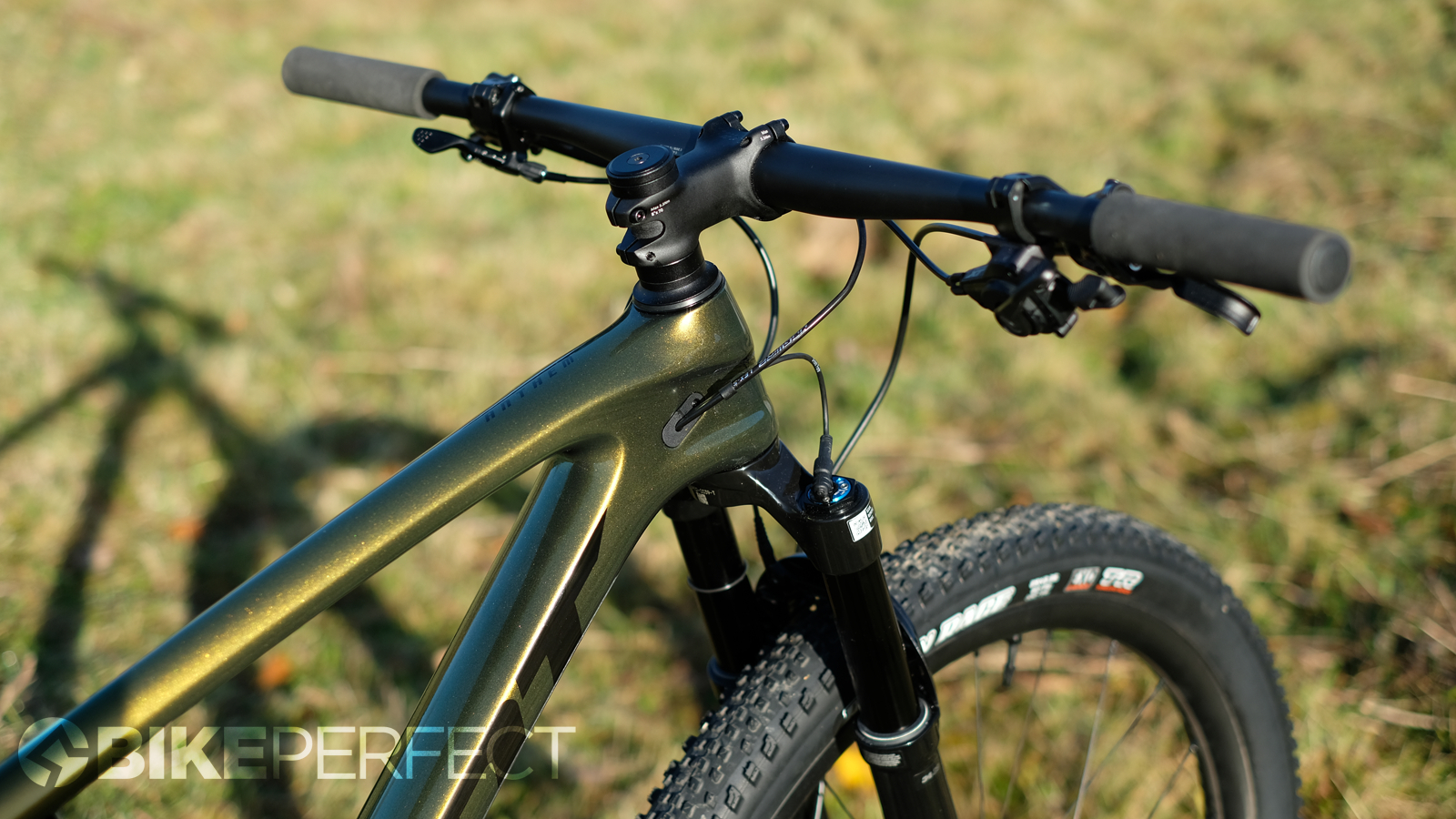
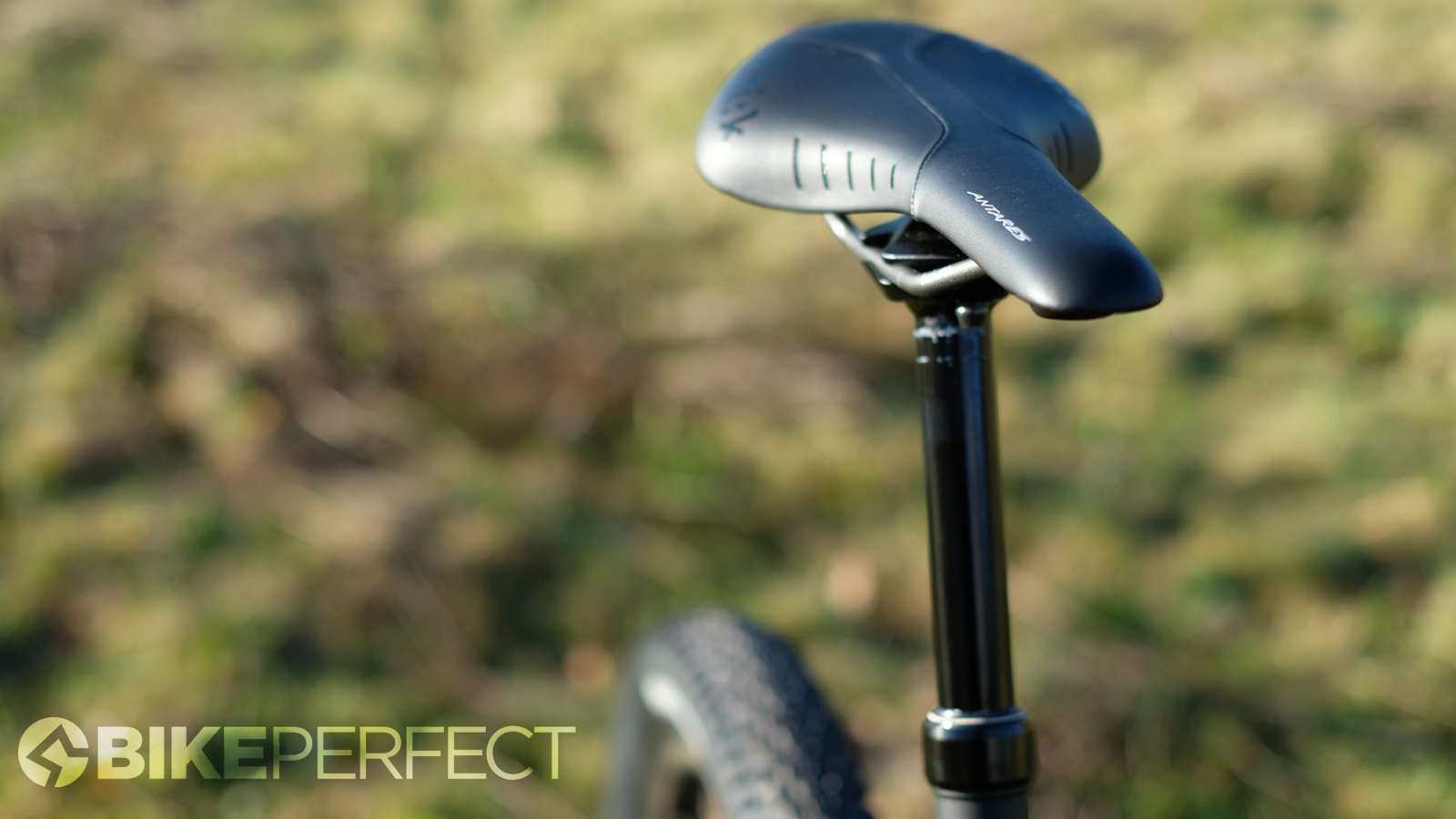
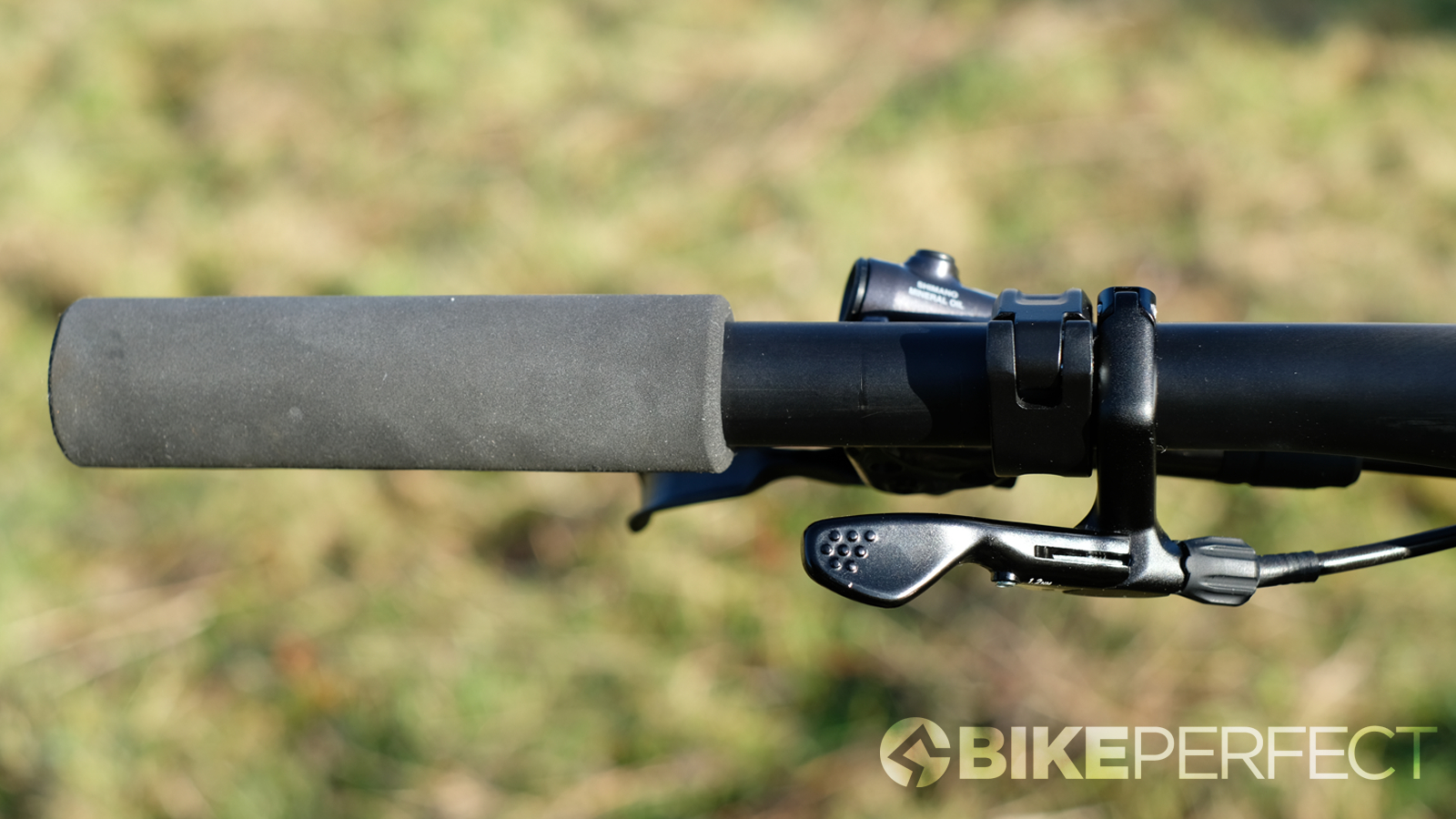
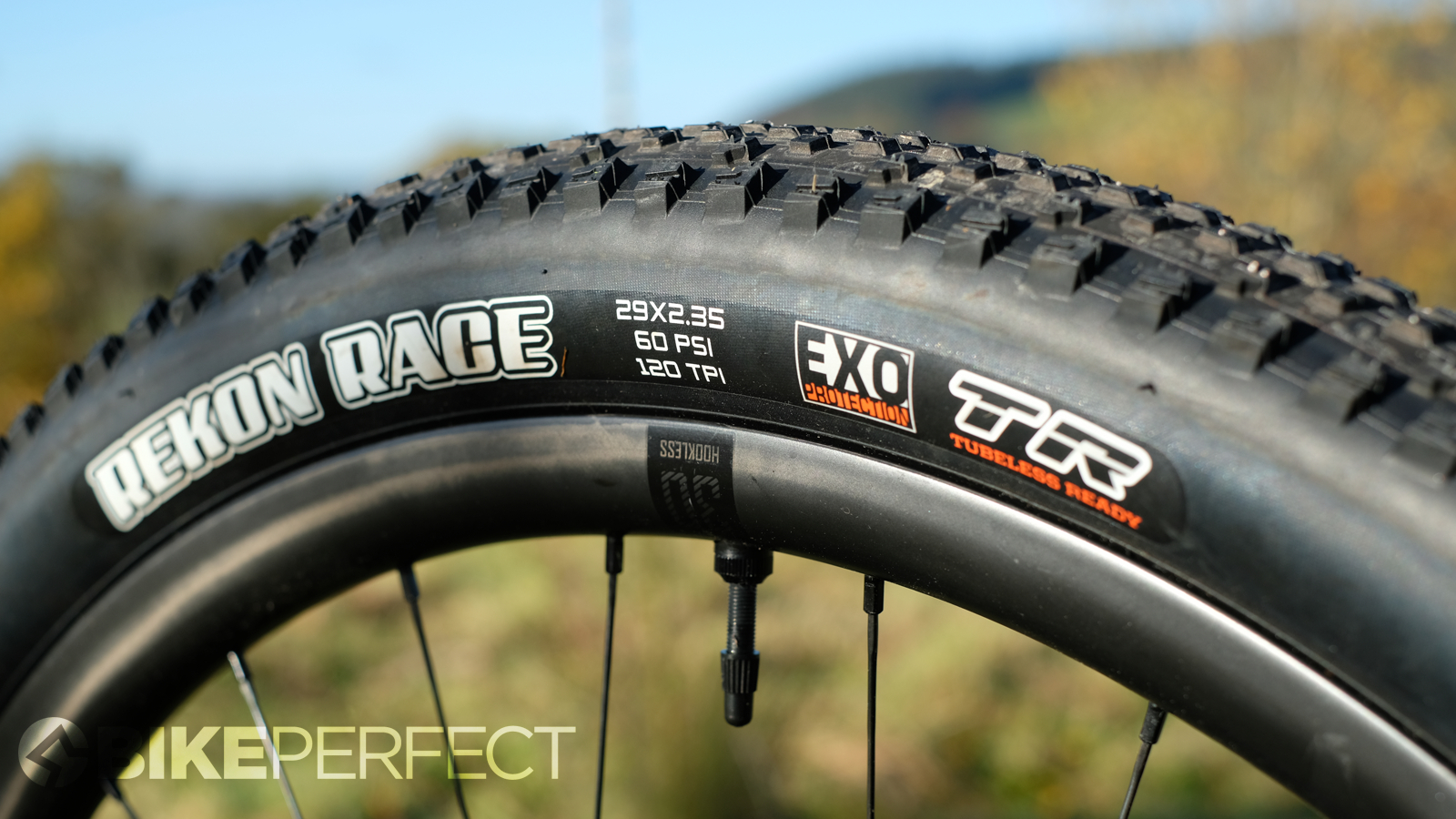
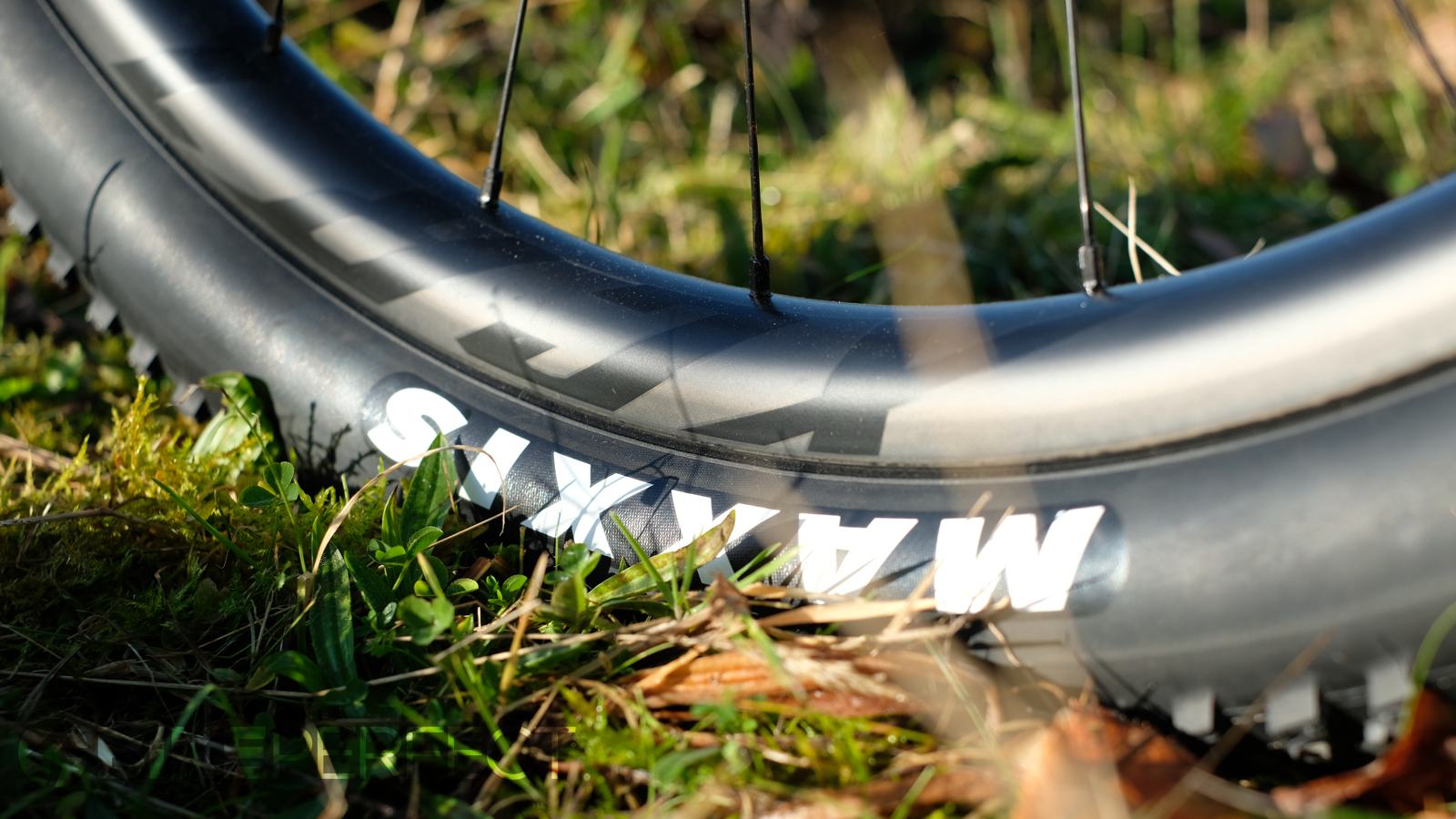
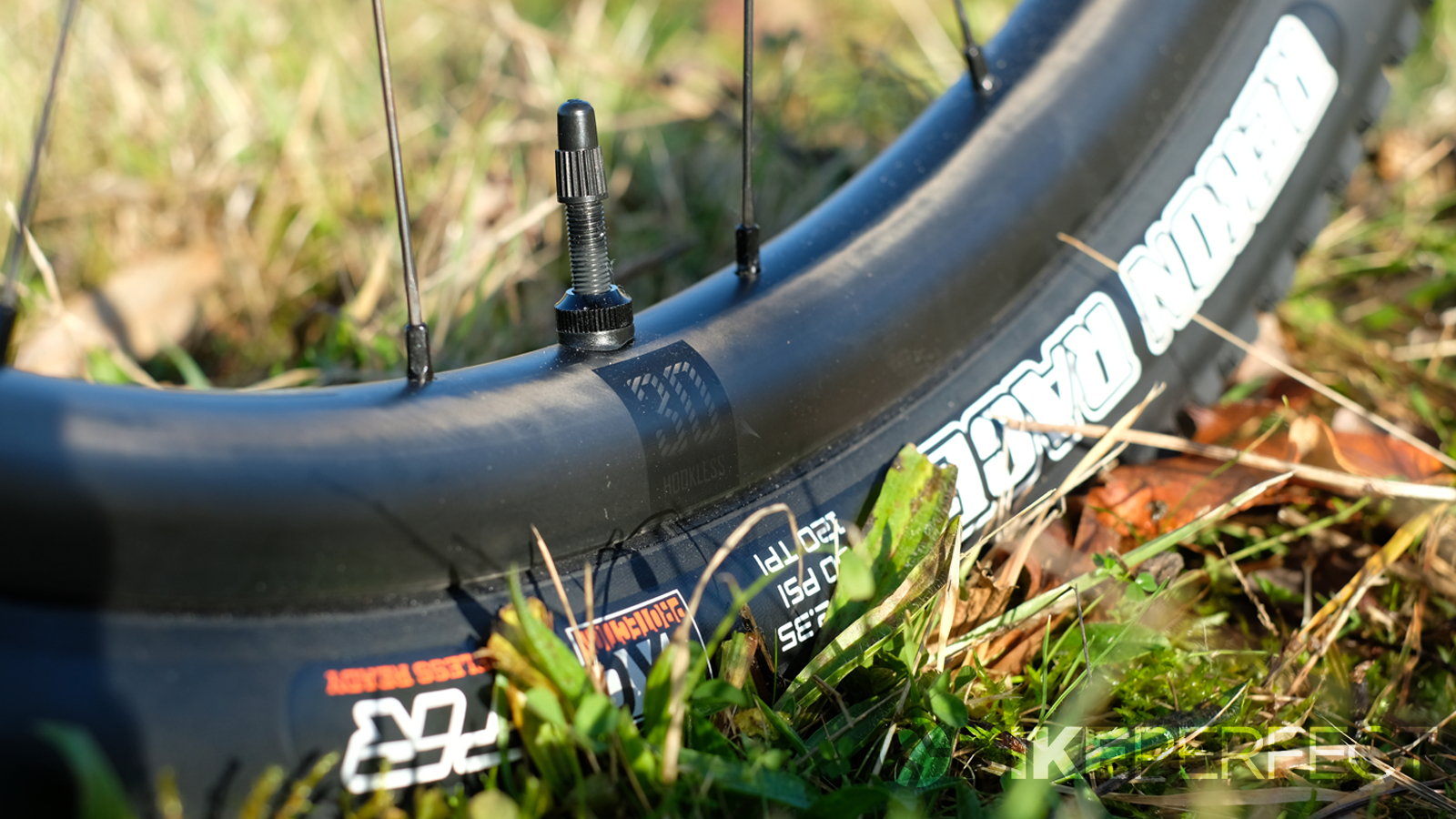
We’ll do it live
Fox’s Live Valve could easily be a subject in of itself but I will try and keep it somewhat brief as, while Fox’s system doesn’t define the Anthem’s ride, it's definitely a symbiotic relationship.
Of the five Live Valve settings (Climb, Firm, Sport, Comfort and Open) I found myself using Climb for the majority of riding or Firm on smoother rides. Climb is the default setting and leverages Live Valve full capabilities, offering increased pedaling platform at the rear on climbs then switching to Sport mode on the downs. Note that Sports mode is not fully open, more on that later.
There's also some threshold adjustment via the app which gives five position adjustment to control the level of impact required to activate the system; again I rode it mostly in setting three as I found it gave me the best balance. Fox’s app does have a window to download more tunes although at the time of writing none are available. Connecting the app also allows you to calibrate the system, run diagnostics, keep track of suspension settings and service intervals.
The way Live Valve controls the suspension is very subtle; it's hard to pinpoint when things are happening but there's a noticeable and satisfying change of personality from stiff to souplesse as you crest a hill and drop straight into a downhill. You can actually see it working on climbs, with the shock opening to absorb an impact, bobbing under pedal power for a moment before returning to its stiff pedaling platform.
I found the Anthem Advanced Pro 29 1 rode best in standard Climb mode, riding efficiently up and rapid back down. Point the bike uphill and Live Valve really shows its worth, eliminating pedal influence to become stiff and reactive whether it's pacing up a climb or alternating tempos around switchbacks. Unlike manual lock-out systems where you can choose your support Ievels on the fly, I needed to adjust my riding style a little for crux sections that demanded rear wheel traction, going full attack to 'trick' the system to stay active to help keep the rear wheel glued to the surface.
While I initially thought that Live Valve would simply set the suspension to wide open on descents, it definitely doesn't. There is a little more support in the midstroke when it's on, which helps stop the 100mm of rear travel from blowing through its limited reserves. Set it to open, or completely turn it off, and the bike begins to feel a bit wallowy. Fox clearly doesn’t intend for it to be run open either; you need to manually set it to open mode or turn the system off which sort of defeats the purpose of an electronic system that adjusts your suspension on the fly for you.
Other than that, Live Valve simply worked its magic in the background, blending in with the bike and adapting with the terrain.
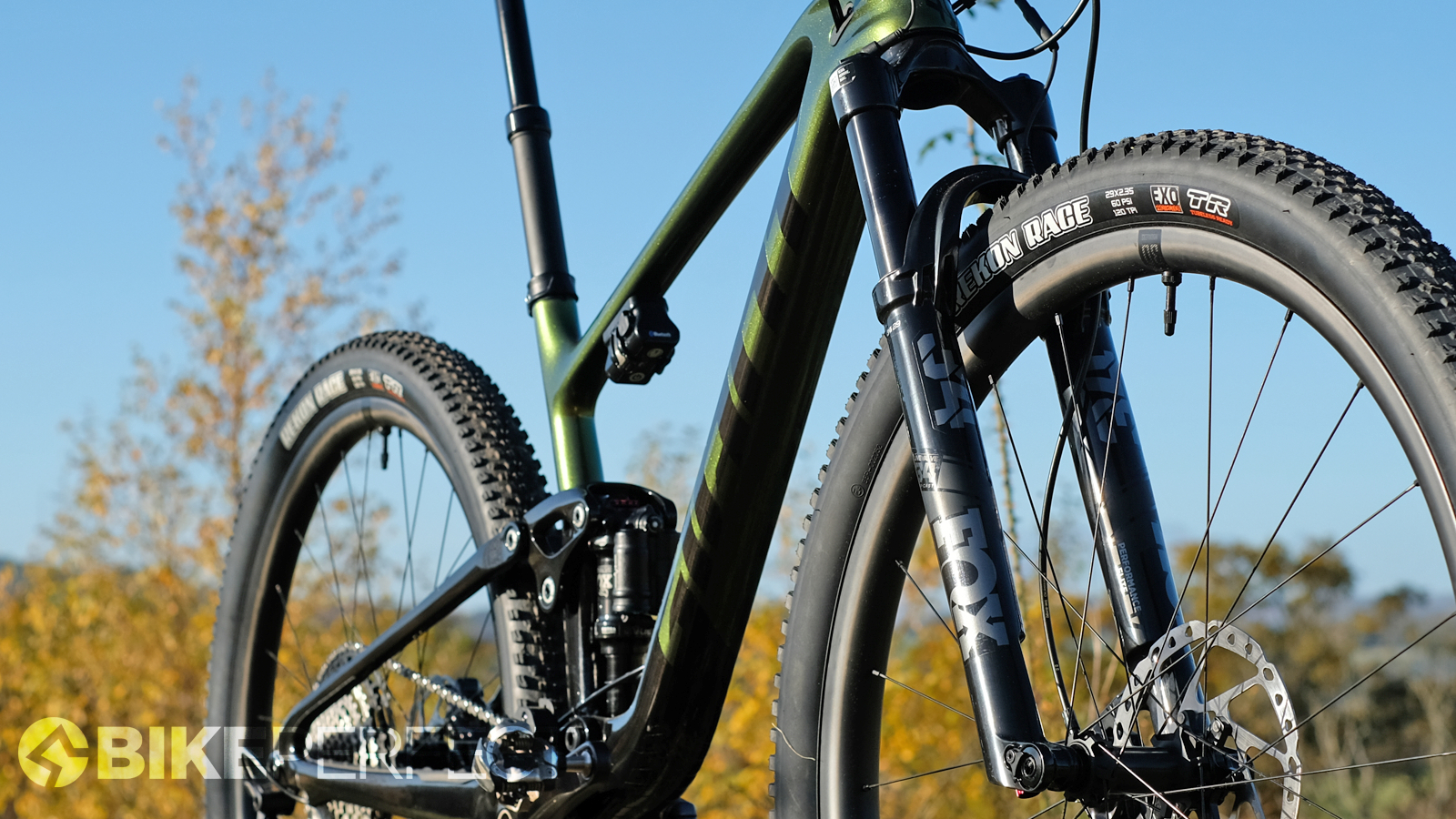
Performance
While I haven’t ridden the older Anthem, just looking at pictures of the two bikes clearly shows that the new model is a considerably different beast and will ride in a very different manner. The more progressive geometry paired with the added suspension travel and burlier downcountry bike spec really sets the mood for the new breed.
The Anthem felt at home on short sharp rides or big marathon days alike. The longer geometry puts you in a great central position whether it's climbing or descending, stretching you out enough to maneuver the bike on descents, and the 75.5-degree seat tube angle sits you nicely over the pedals when climbing. The 760mm bars and 70mm stem felt spot-on for control and, despite the larger clamps size, didn't feel harsh after long rides, although the large volume tires certainly help too.
Most cross-country bikes, even the slack ones, usually have an extremely lively feel on the descents but the Anthem is quite sedated when compared to the likes of the Scott Spark. It doesn't have the hair-trigger cornering and intensity that can be equally thrilling as it can be unnerving when pushed too hard. This gives it the composure that you would expect from a more capable bike. There were a number of corners I rode through only realizing upon exiting that I hadn’t actually braked going into them and, if Strava is to be believed, I wasn’t going slower either as I returned from my first ride with a decent haul of PRs.
This poise means descending the Anthem has a very calculated feel to it, almost like the bike is breaking down each section of the trail into manageable pieces to deal with one at a time, step by step, before taking a breath and resetting ready for the next part. Push it into hard trails with increased intensity and it still manages to stay resilient and controlled even if it feels like you don’t have time to breathe.
The Fox 34 fork with its 110mm of travel really helps instill a calm and collected feel in the bike. As cross-country bikes become slacker, geometry numbers can make promises that ultra-lightweight svelte suspension forks can't deliver. The taut headtube, 34mm stanchions, and 35mm diameter handlebar feel precise and direct rather than undermining the bike’s desires. The wheels help as well; other than the odd twang in high load situations they balance compliance to hold their line well and remained true through testing. Speccing 2.4in Rekon’s adds a bunch of traction too.
This structural security, on top of the additional Live Valve paraphernalia, dropper post, and 2.4in tires, means that the overall weight is on the heavier side. My medium test sample weighed in at 11.45kg, which is still respectable enough to really motor up climbs. The weight can’t be ignored though, especially since the cost of the Anthem Advanced Pro 29 1 means it’s always going to be a compromise as there are lighter, cheaper, conventionally dampened options that are just as capable on the market. That said, Fox’s Live Valve does offer a tangible performance enhancement and a real selling point for those looking to get their hands on cutting-edge cross-country tech.
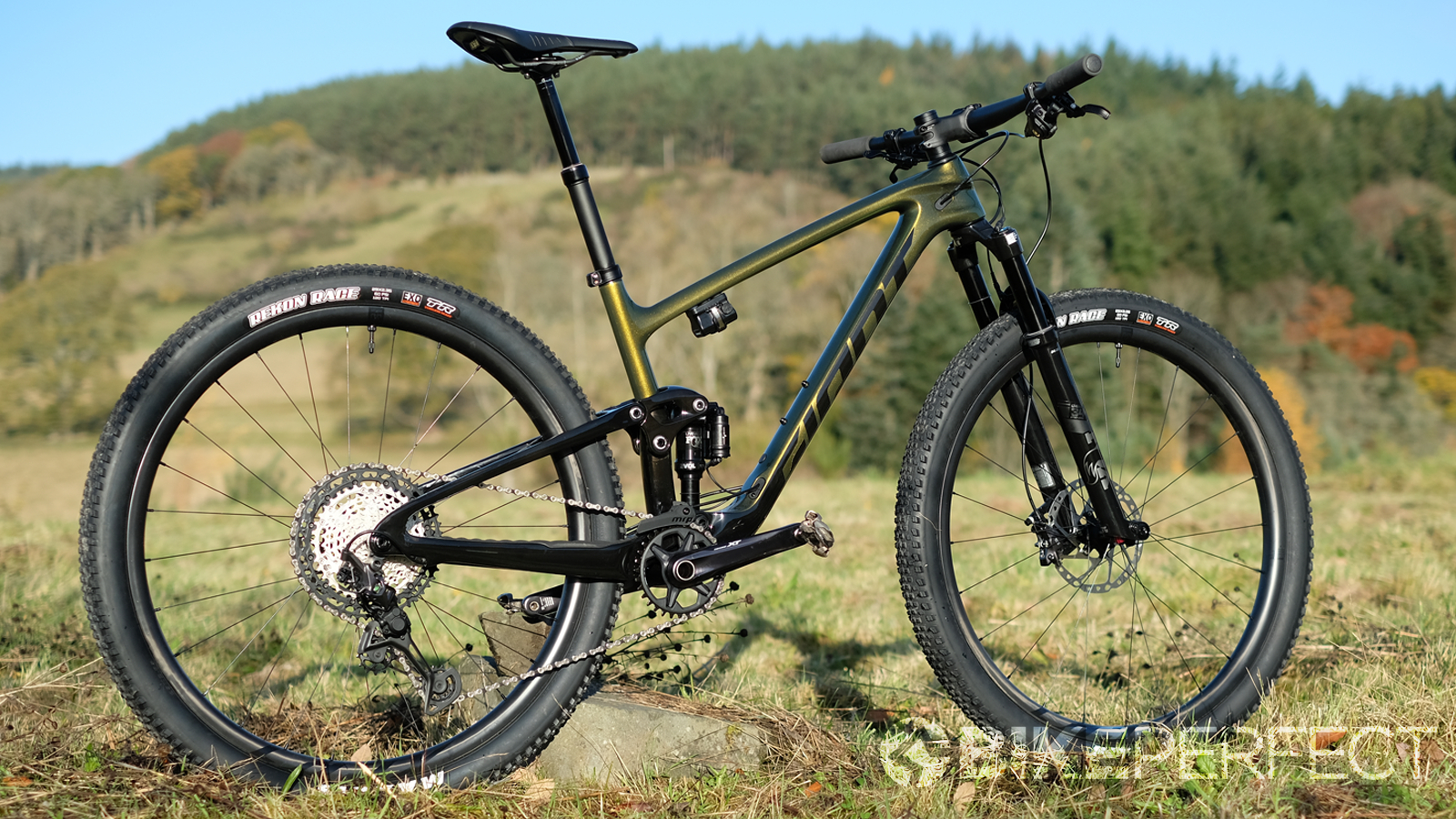
Verdict
Giant has clearly worked hard to bring the Anthem up to date with the current crop of multi-faceted cross-country bikes that see opportunities to win races not only on the ups but also on the downs.
Having not ridden an Anthem without Live Valve it's actually really hard to define where Live Valve finishes and the Anthem begins. They make a superb pairing though with Live Valve’s suspension management really complementing the efficient up and fast down nature of cross-country these days. Some riders will probably still prefer suspension control from a lever and a wire but Live Valve’s hands and thought-free operation certainly offers benefits. It's maybe not the game changer that dropper posts and slack angles have been for the Anthem but it certainly adds an adaptive nature to the bike which boosts performance.
The Anthem itself feels very much like a trail bike in cross-country clothing. It's utterly composed on the descents and keeps a stiff upper lip when pushed beyond its cross-country remit. Despite the increasingly technical nature of cross-country courses, the Anthem Advanced Pro 29 1 is a bike that if piloted to its potential is going to quickly reel in less confident bikes and riders. Planted and purposeful, it's excellent fun out with the racing tape as well – if ripping around the woods or hunting down trail bikes is more your thing.
Test conditions
- Temperature: 8-10 degrees C
- Surface: Tweed Valley trail center and local natural trails
Tech Specs: Giant Anthem Advanced Pro 29 1
- Price: $7,500 / £6,999
- Model: Giant Anthem Advanced Pro 29 1
- Discipline: Cross-country
- Head angle: 67.5-degrees
- Frame material: Advanced-Grade Composite
- Size: Medium
- Weight: 11.45kg
- Wheel size: 29 x 2..35in
- Suspension: Fox 34 Float SC Performance Elite Live Valve 110mm travel, 44mm offset / Fox Performance Elite Live Valve 100mm travel
- Drivetrain: Shimano XT shifters and mech with Shimano XT 10-51T 12-speed cassette
- Cranks: Shimano Deore XT (175mm), 32t chainset
- Brakes: Shimano XT brakes with 180mm front / 160 rear rotors
- Cockpit: Giant Contact SLR XC Flat (760mm) handlebar and Giant Contact SL XC (70mm) stem
- Wheelset: Giant XCR 1 30 wheelset
- Tires: Maxxis Recon Race 29x2.35 tires
- Seatpost: Giant Contact Switch dropper post
- Saddle: Fi'zi:k Antares R5 with K:ium rails

Graham Cottingham joined the BikePerfect team as our senior tech writer in 2020. With over 20 years of riding experience, he has dabbled in downhill, enduro, and gravel racing. Not afraid of a challenge, Graham has embraced bikepacking over the last few years and likes nothing more than strapping some bags to his bike and covering big miles to explore Scotland's wildernesses. When he isn’t shredding the gnar in the Tweed Valley, sleeping in bushes, or tinkering with bikes, he is writing tech reviews for BikePerfect.
Rides: Cotic SolarisMax, Stooge MK4, 24 Bicycles Le Toy 3, Surly Steamroller
Height: 177cm
Weight: 71kg
